-

RS kickers
© FordR and S. Two letters that, when applied to the back of a Ford, have the ability to turn the humdrum into a hero. Since 1970, the iconic RS badge has granted mythical status to many otherwise ordinary hatchbacks and saloons. As Ford prepares to go electric, the future for the RS badge looks uncertain. So let’s keep our fingers crossed and enjoy its story so far.
-
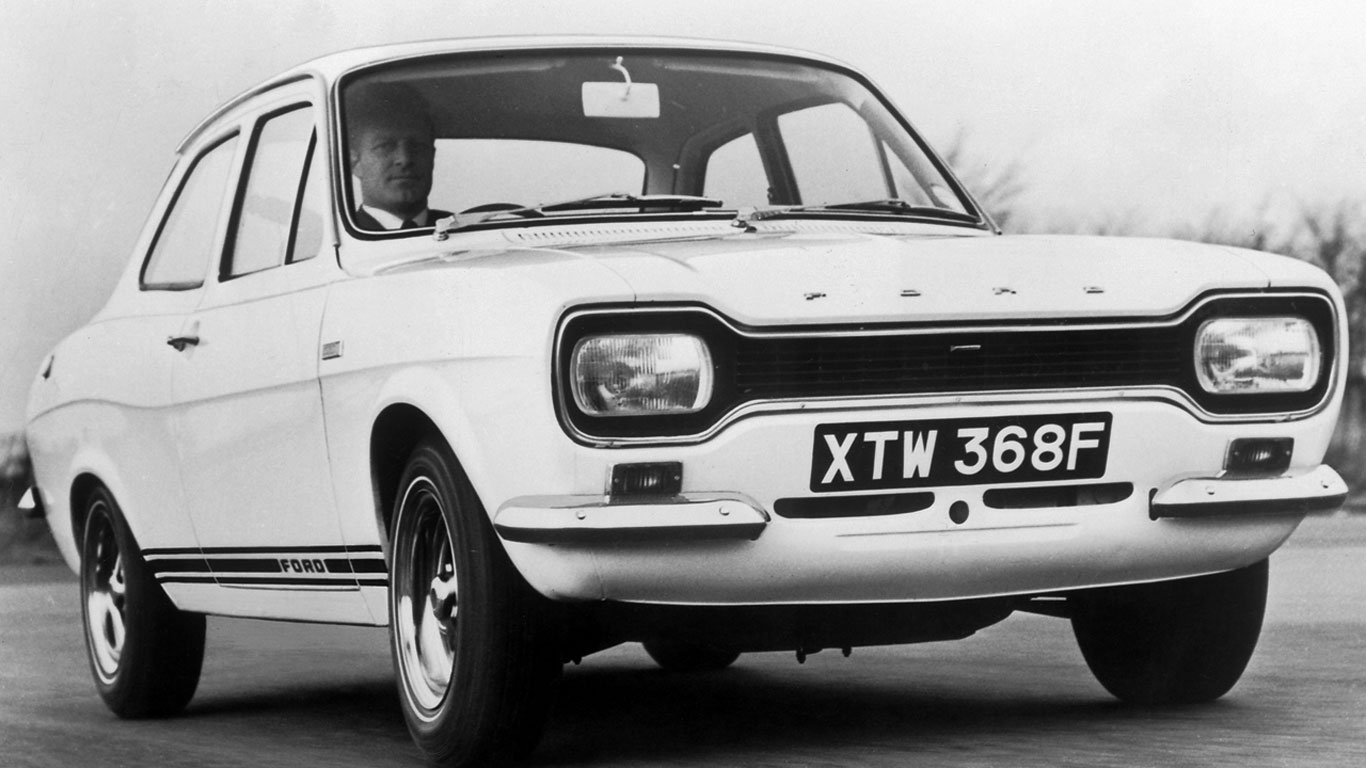
Ford Escort Twin Cam
© FordThe Ford Escort RS1600 of 1970 may have been the first Ford to wear the RS badge, but the journey started in 1968. Billed as ‘the fastest thing on Ford wheels’, the Lotus-Ford-engined Escort Twin Cam effectively rendered the Lotus Cortina obsolete. Thanks to its success on the world rally circuit, it set the scene for decades of fast Fords. It’s also recognised as an RS model by the RS Owners Club.
-
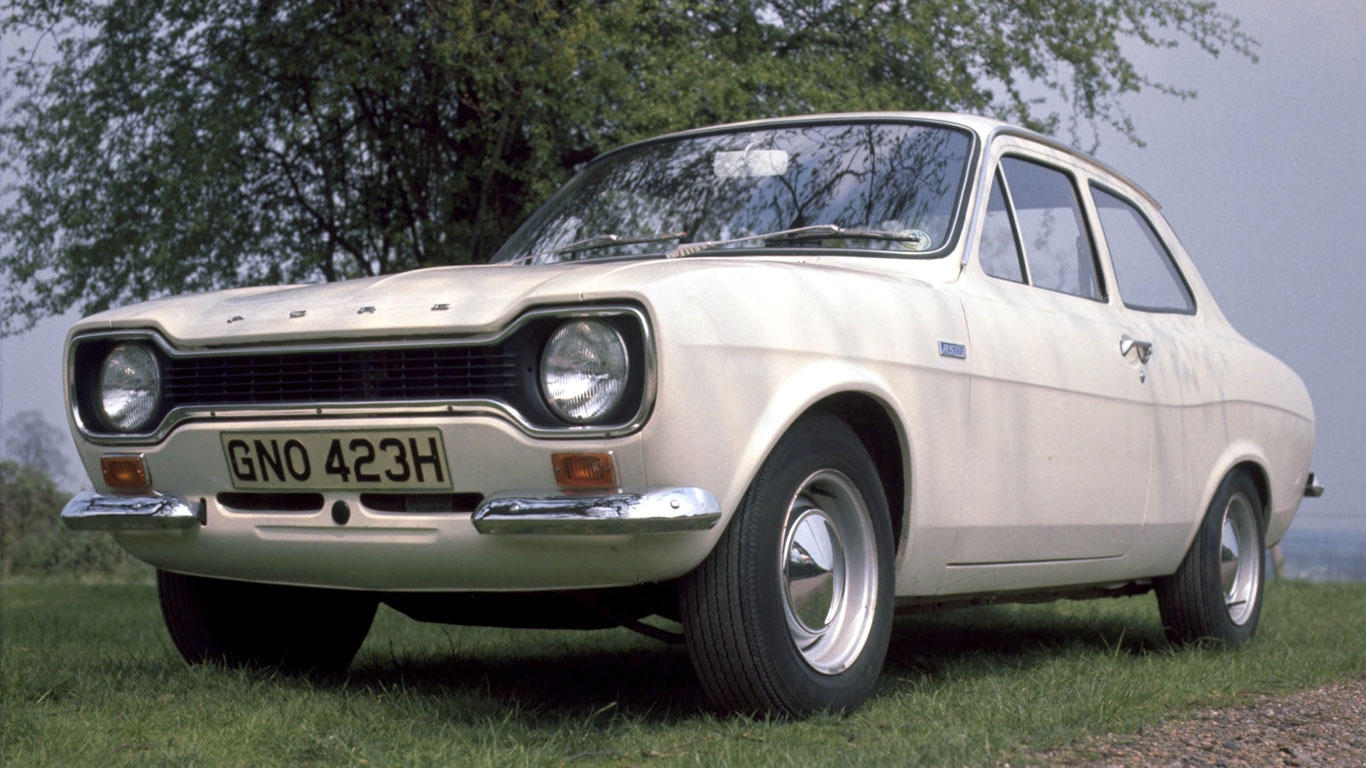
Ford Escort RS1600
© FordThe Ford Escort RS1600 represents the genesis of the RS badge. Buoyed by the success of the Escort Twin Cam, the Escort RS1600 of 1970 was the first car to be developed by the Advanced Vehicle Operations (AVO) division in Essex. The list of firsts didn’t stop there. Not only was it the first Ford to use a 16v twin-overhead-camshaft engine, it was also the first to be marketed and sold through special Rallye Sport dealerships.
-
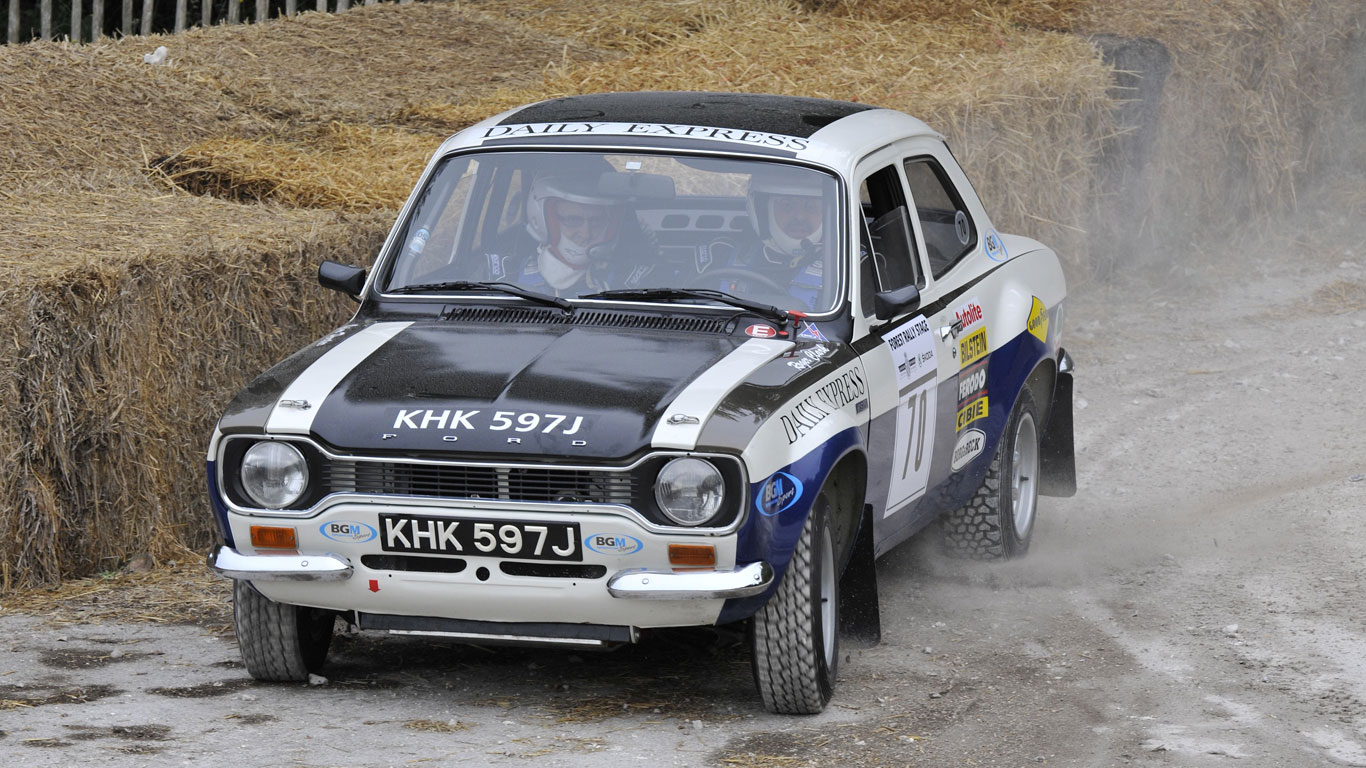
Ford Escort RS1600
© FordBut the Escort RS1600 wasn’t some cynical, smoke-and-mirrors dealer special. With a Formula 2 engine, this fast Ford could top 113mph, which was pretty quick in 1970. But the Escort RS1600 was destined for greater things, and many were upgraded for use on rally circuits. It was a better car than the Twin Cam it replaced, but the engine needed to be treated with respect.
-
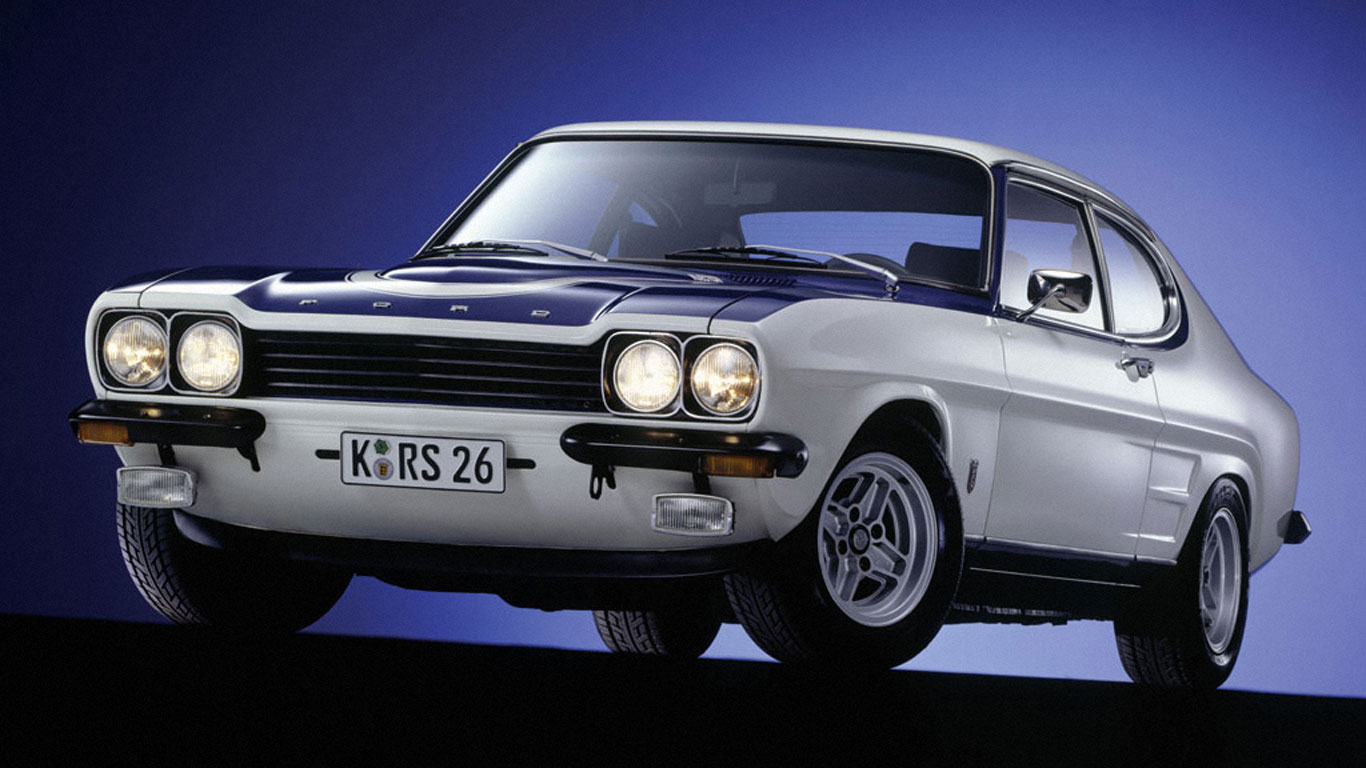
Ford Capri RS2600
© FordGiven the Ford Capri’s sporting credentials, it was only a matter of time before the RS badge would appear on ‘the car you always promised yourself’. Development had started a year earlier in 1969, but at the 1970 Geneva Motor Show, the homologation special Ford Capri RS2600 was born. Powered by a 2.6-litre V6 engine, the RS2600 would top 124mph and sprint to 60mph in just 8.0 seconds. Many of the cars to roll off the production line featured the iconic black bonnet.
-
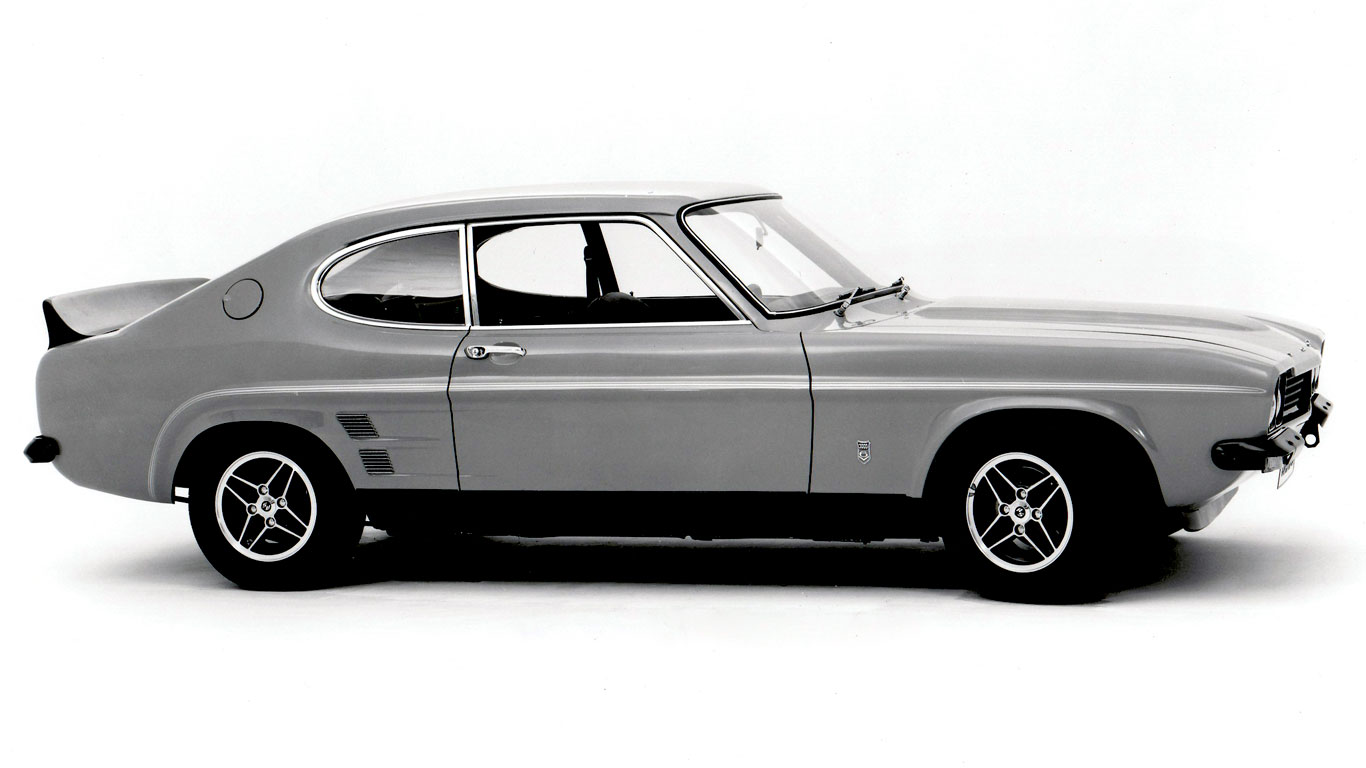
Ford Capri RS3100
© FordThe RS3100 of 1973 was the second RS Capri and, with its 3.0-litre V6 Essex engine, it was considerably more lairy than the RS2600. Thanks to the oil crisis and the impending arrival of the Mk2 Capri, sales of the now-famous RS3100 were slow, despite that unique ducktail spoiler on the boot lid.
-
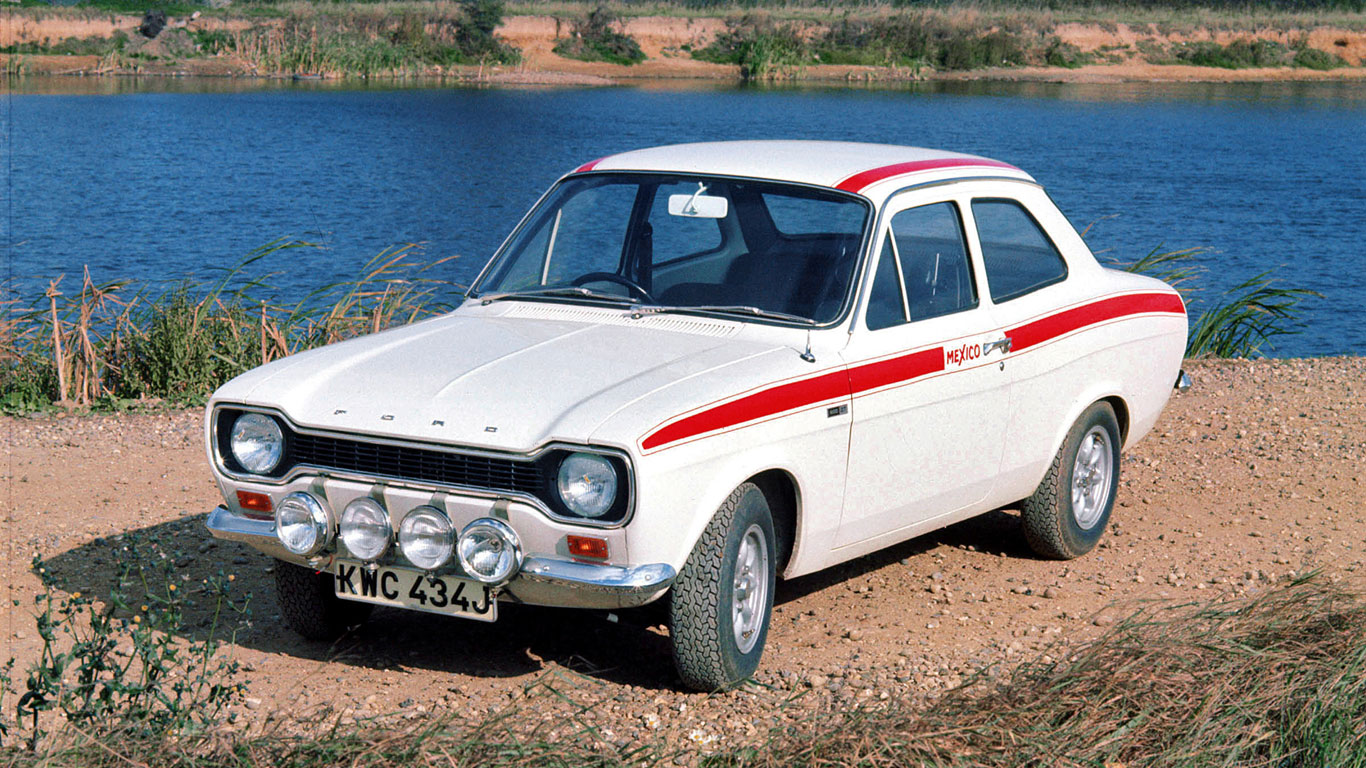
Ford Escort RS Mexico
© FordFor many, the ultimate Ford Escort is the RS Mexico. Introduced in 1970, the Mexico was named after the 1970 London to Mexico World Cup Rally, an event that was dominated by the Escorts. Powered by the same 1.6-litre Kent engine found in the Capri and Cortina 1600E, the Escort Mexico became a proper working class hero, complete with in-yer-face decals and plenty of street presence. A star was born.
-
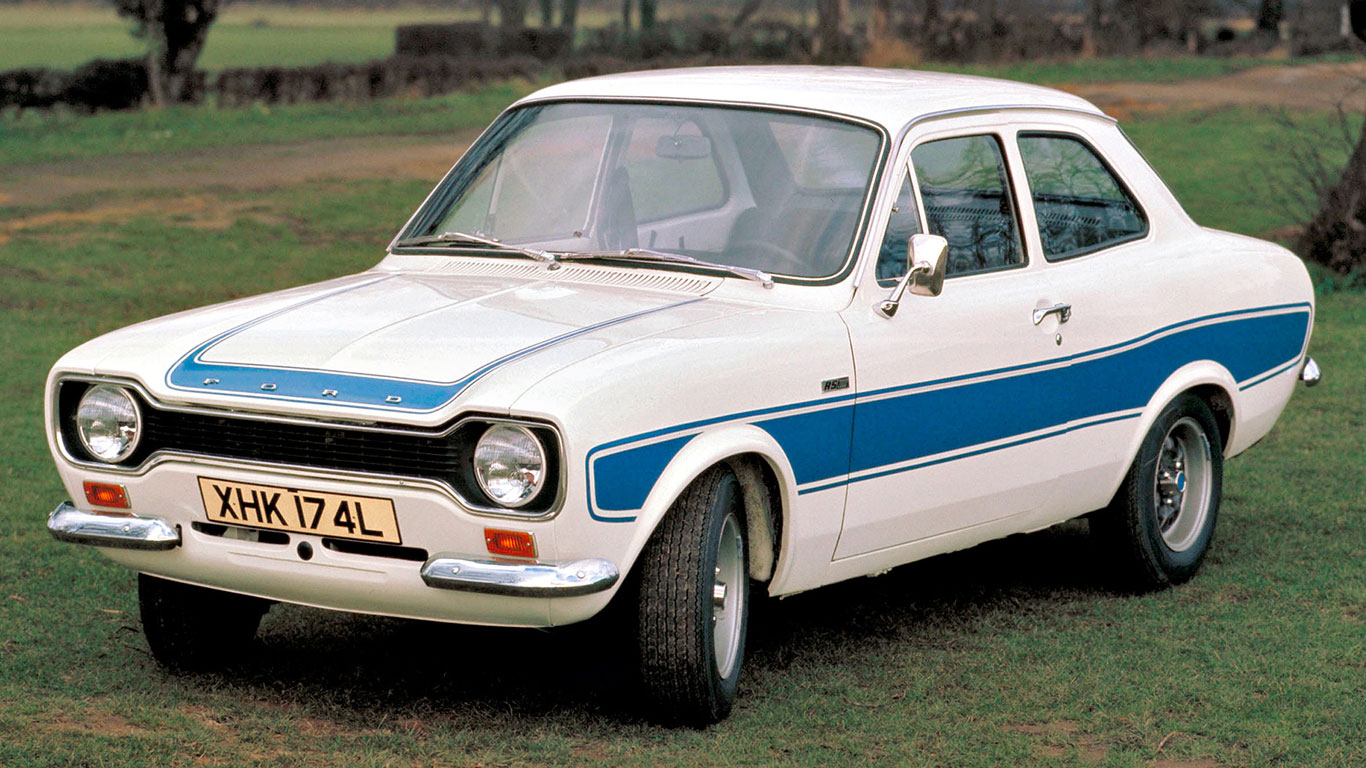
Ford Escort RS2000
© FordIn 1973, the RS1600 made way for the more powerful RS2000. As its name suggests, this new Escort was powered by a 2.0-litre engine, although Ford had a few problems squeezing the larger unit into the Escort’s engine bay. Homologation rules dictated that 5,000 cars must roll off the production line, although it is believed only 3,500 RS2000s were ever built. It’s notable for being the final car to be produced at the AVO factory, which closed in December 1974. In four years, it had delivered its fair share of icons.
-
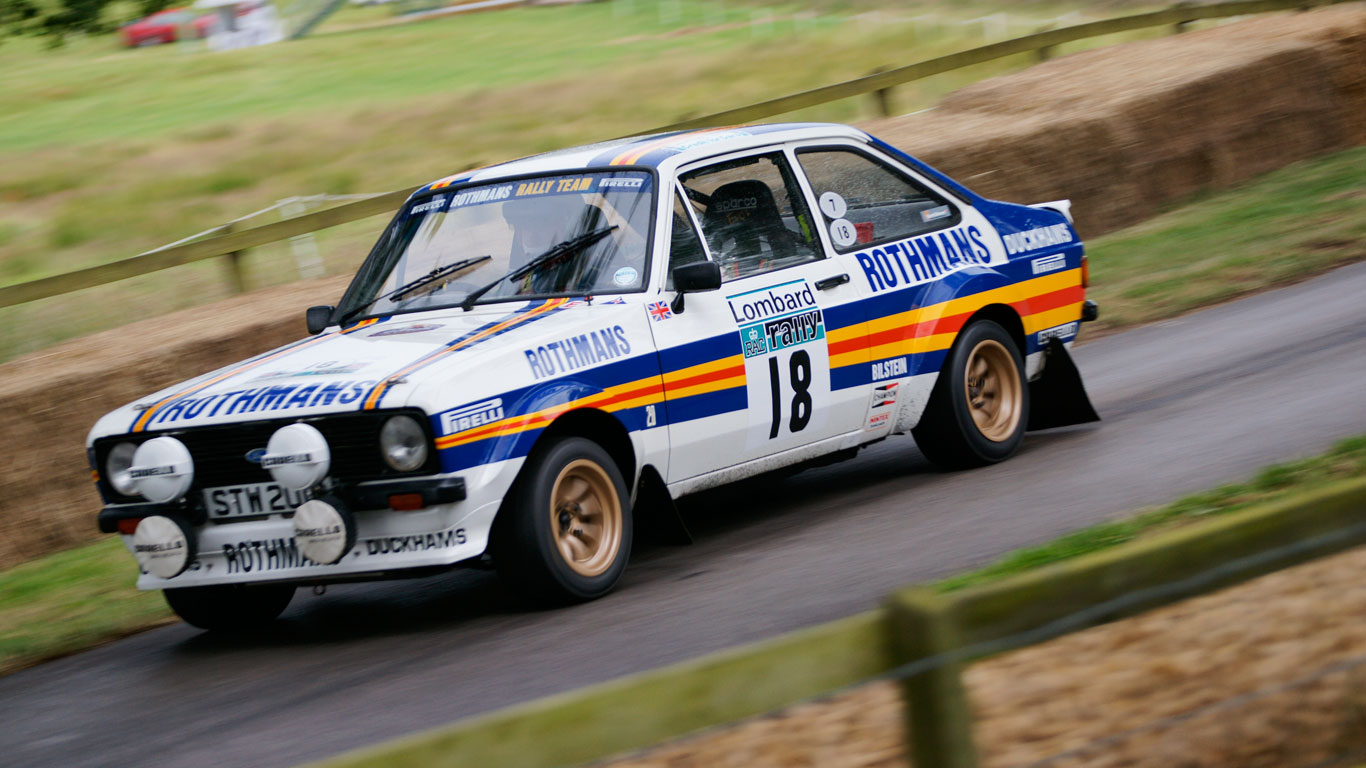
Ford Escort RS1800
© FordWith the AVO plant closed and production of the Mk1 Escort and Capri RS2600 coming to an end, there was a period of calm for the RS badge in the mid-1970s. But all that changed in 1975 when Ford previewed the new RS1800 and RS2000 models. The RS badge was back.
-
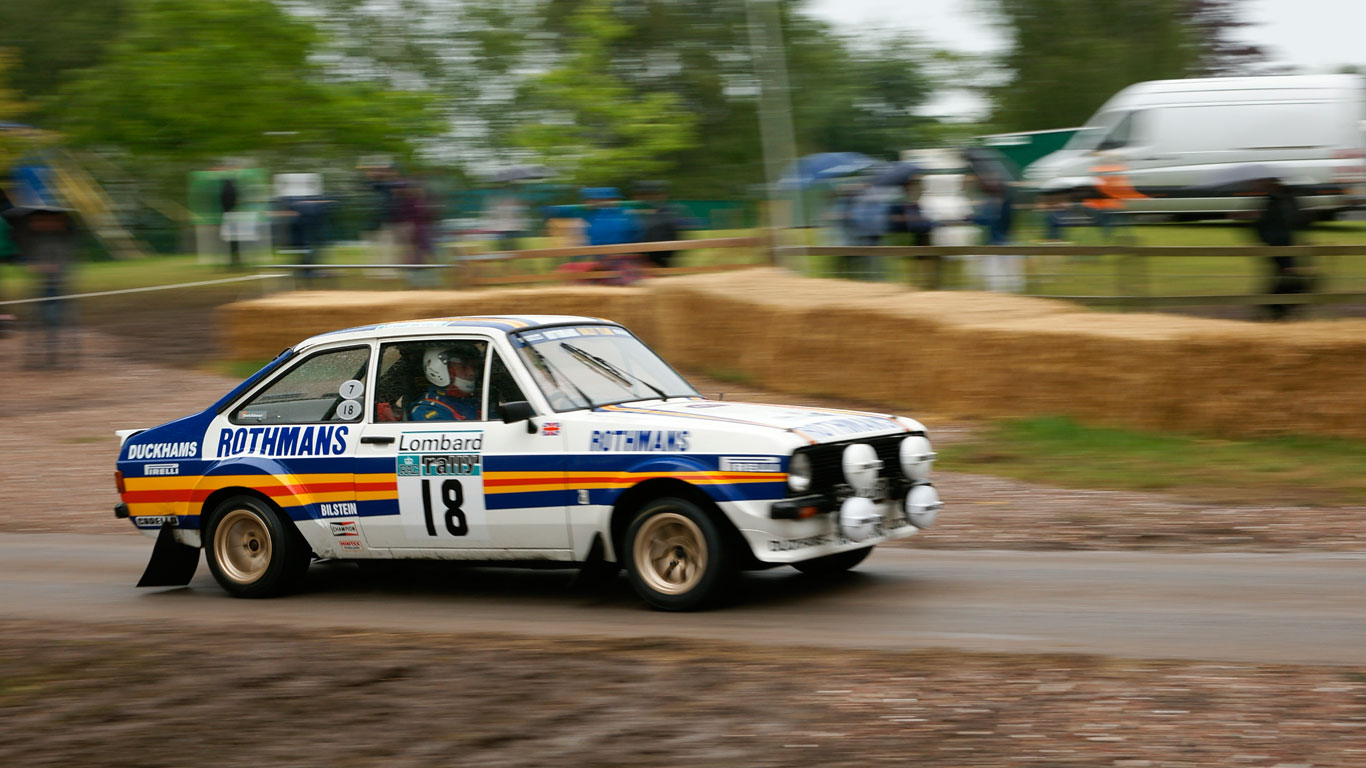
Ford Escort RS1800 Mk2
© FordThe Ford Escort RS1800 Mk2 is one of the most successful rally cars of all time, and can still be seen competing on the world’s circuits today. Just over 100 were built between 1975 and 1977, making it an incredibly rare and sought-after RS. Don’t let the name fool you, this was top dog when it came to fast Escorts, sitting above the RS2000 and Mexico. It weighed a mere 915kg, a major contributing factor to its 0-60mph sprint time of 8.9 seconds and 111mph top speed.
-
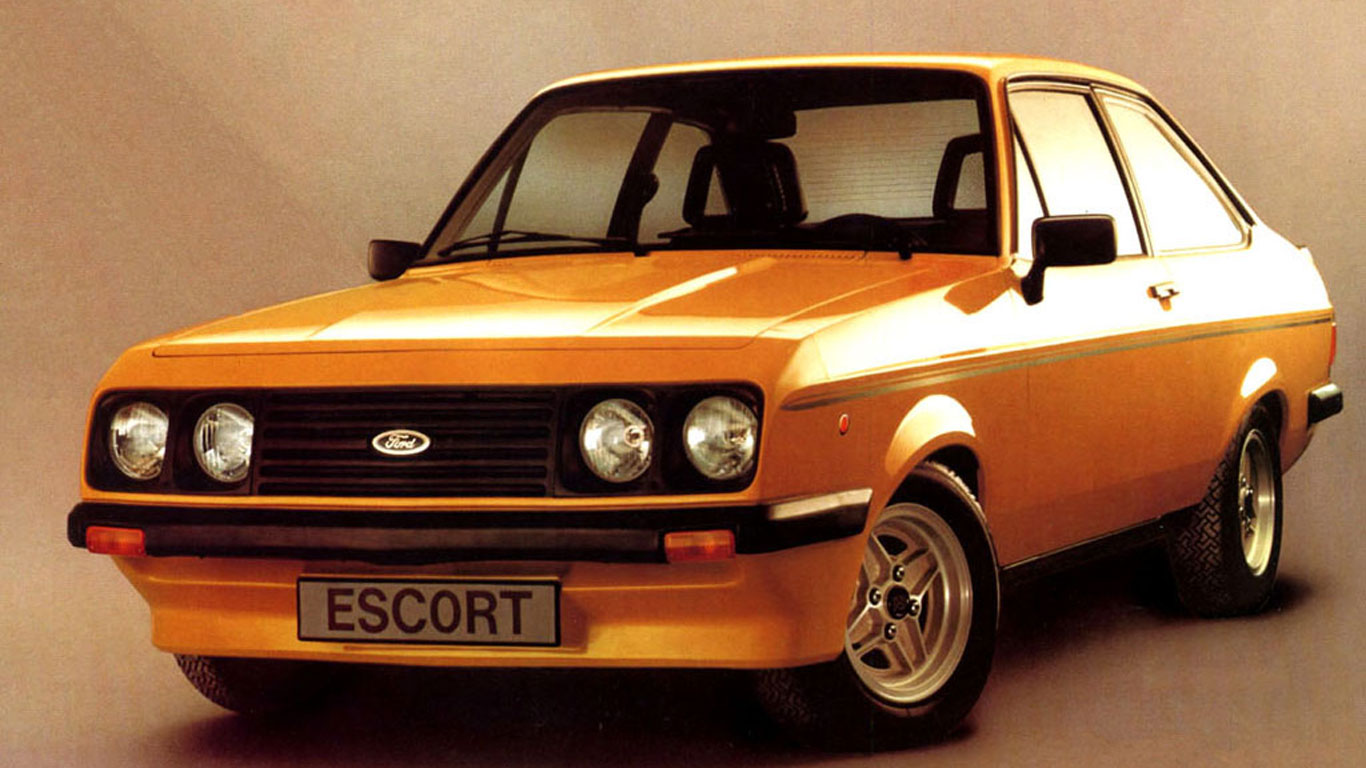
Ford Escort RS2000 Mk2
© FordThanks to its droop snoot nose, the Ford Escort RS2000 Mk2 is one of the most recognisable fast Fords of all time. Launched in 1976, the RS2000 was powered by a 2.0-litre engine and would later be available with a Series X range of options from RS dealers. The wildest of these were the full X-Pack bodykit and Group One specification engine upgrade. It was a bit of an animal.
-
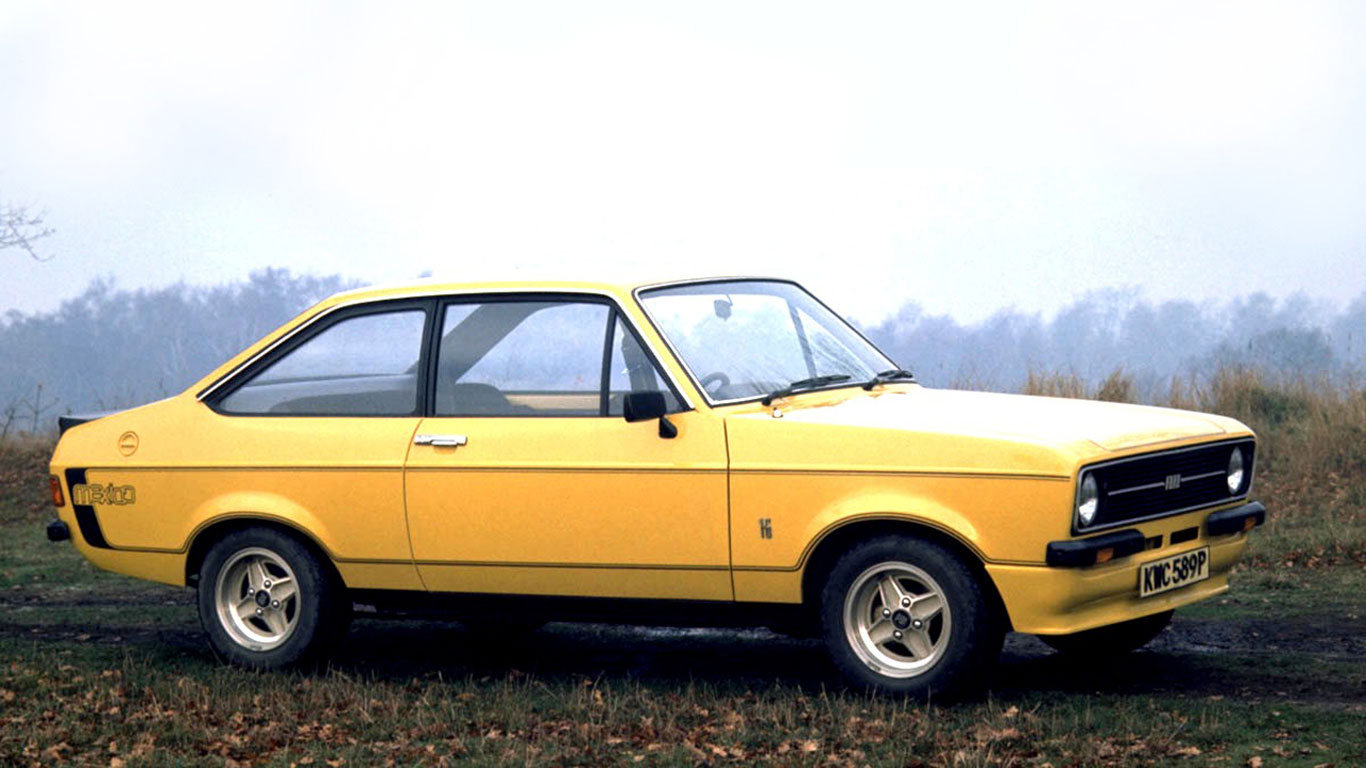
Ford Escort Mexico Mk2
© FordThe Ford Escort RS Mexico Mk2 may have been powered by a smaller 1.6-litre Kent engine, but it didn’t exactly lack punch. There was no droop snoot nose to give it extra street cred, but colours such as Signal Orange, Daytona Yellow and Peppermint Green easily made up for that. Around 2,500 Mk2 RS Mexicos were sold between 1975 and 1978.
-
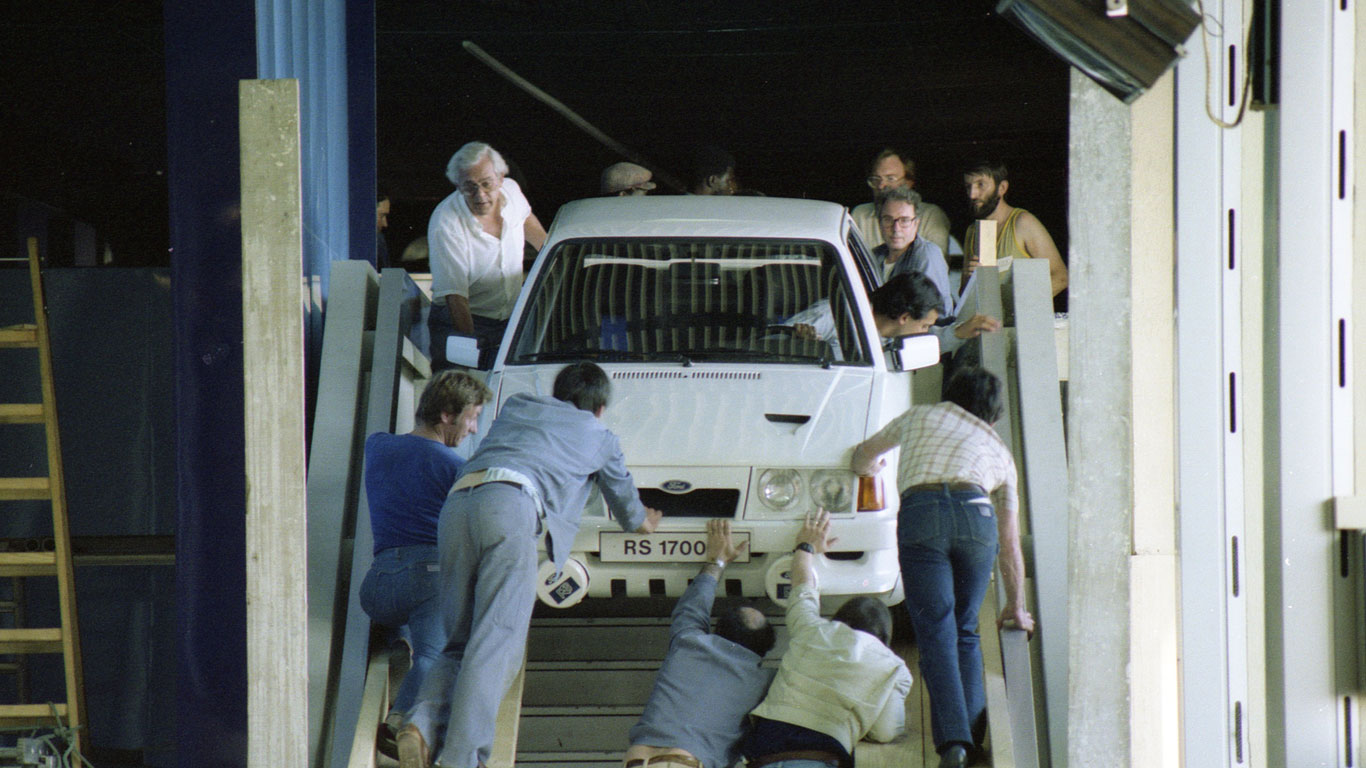
Ford Escort RS1700T
© FordThere was then another period of inactivity for the RS badge, with 1980 – and the arrival of the Mk3 Escort – signalling the end of a rear-wheel-drive era. But things could have been so different; behind the scenes, Ford was working on a rear-wheel-drive version of the Mk3, the near-mythical RS1700T. It was to be entered into the new Group B category of the World Rally Championship, but a host of problems meant it never came to fruition. However, it did give rise to one of the most famous Group B rally cars of all time…
-
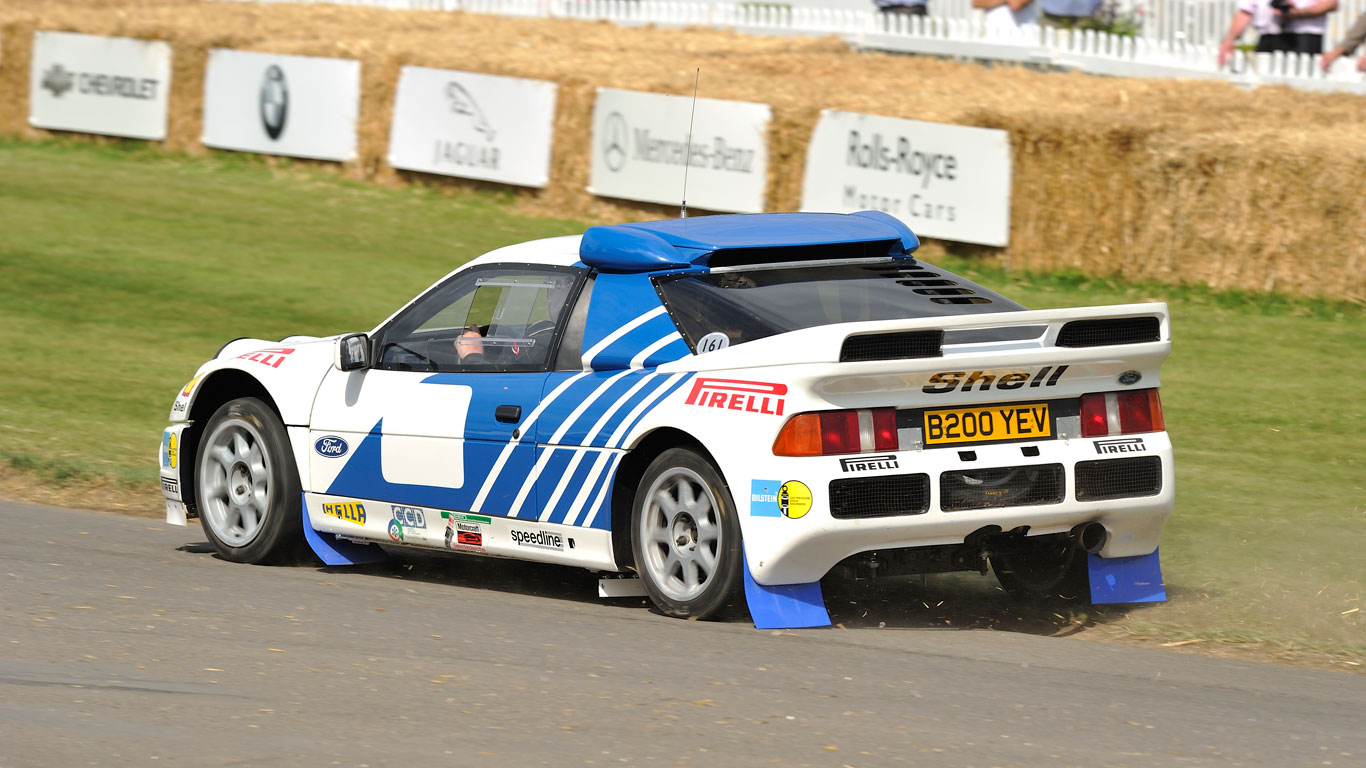
Ford RS200
© FordThis was called the RS200, a four-wheel-drive homologation special, designed specifically for the Group B rally championship. Its fibreglass body was made by Reliant – yes, the company famous for the Robin – and it was powered by a 1.8-litre turbocharged engine developing between 250hp and 450hp, depending on whether it was for road or track use. Such was the pace of development, Ford raided its parts bin to get things finished, as witnessed by the Sierra rear lights, windscreen and side windows.
-
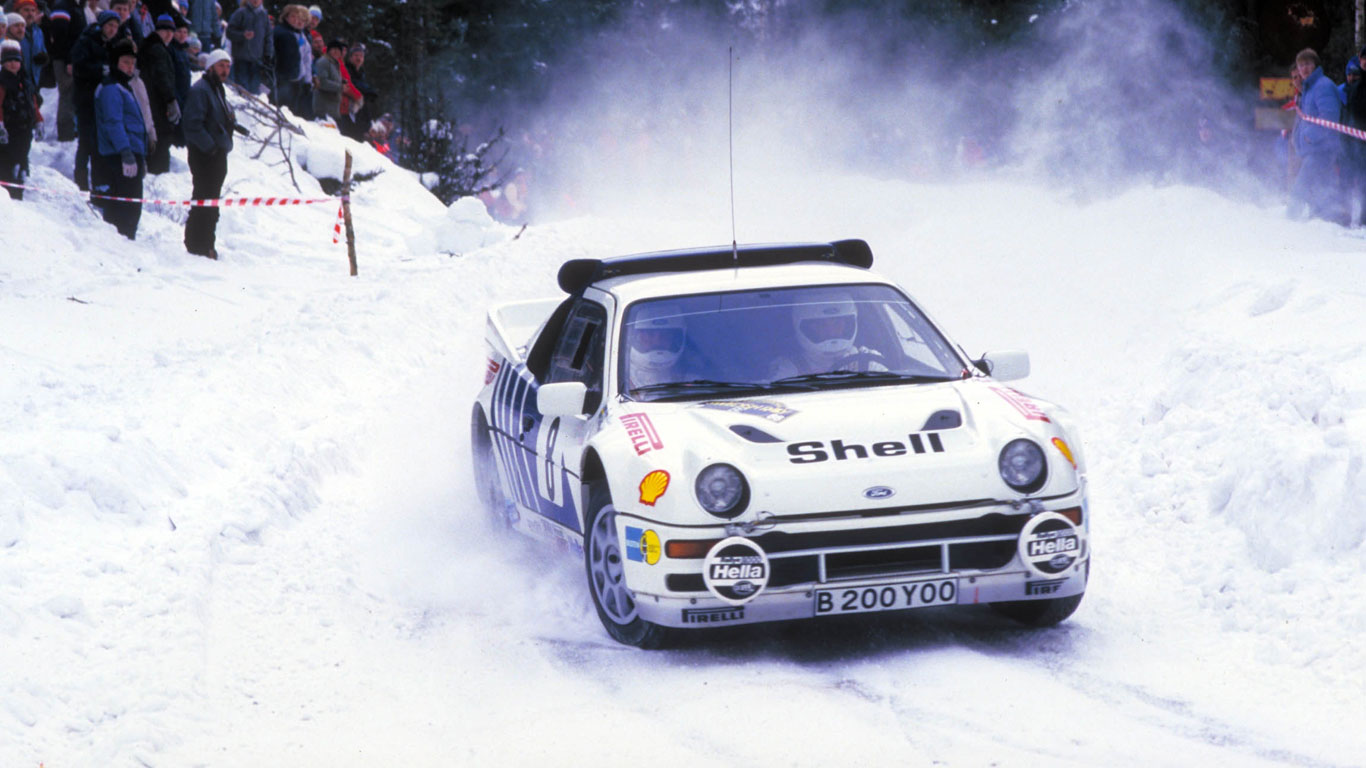
Ford RS200
© FordIn truth, it wasn’t the greatest car ever to wear the RS badge. Difficult to drive, an enormous amount of turbo lag and a poor power-to-weight ratio meant it enjoyed only limited success on the rallying circuit. It was also part of two of the most infamous events in rallying history, when it was involved in the death of three spectators in Portugal and also of co-driver Michel Wyder in Germany. Later, the Group B cars would be banned, resulting in the end for the short-lived RS200.
-
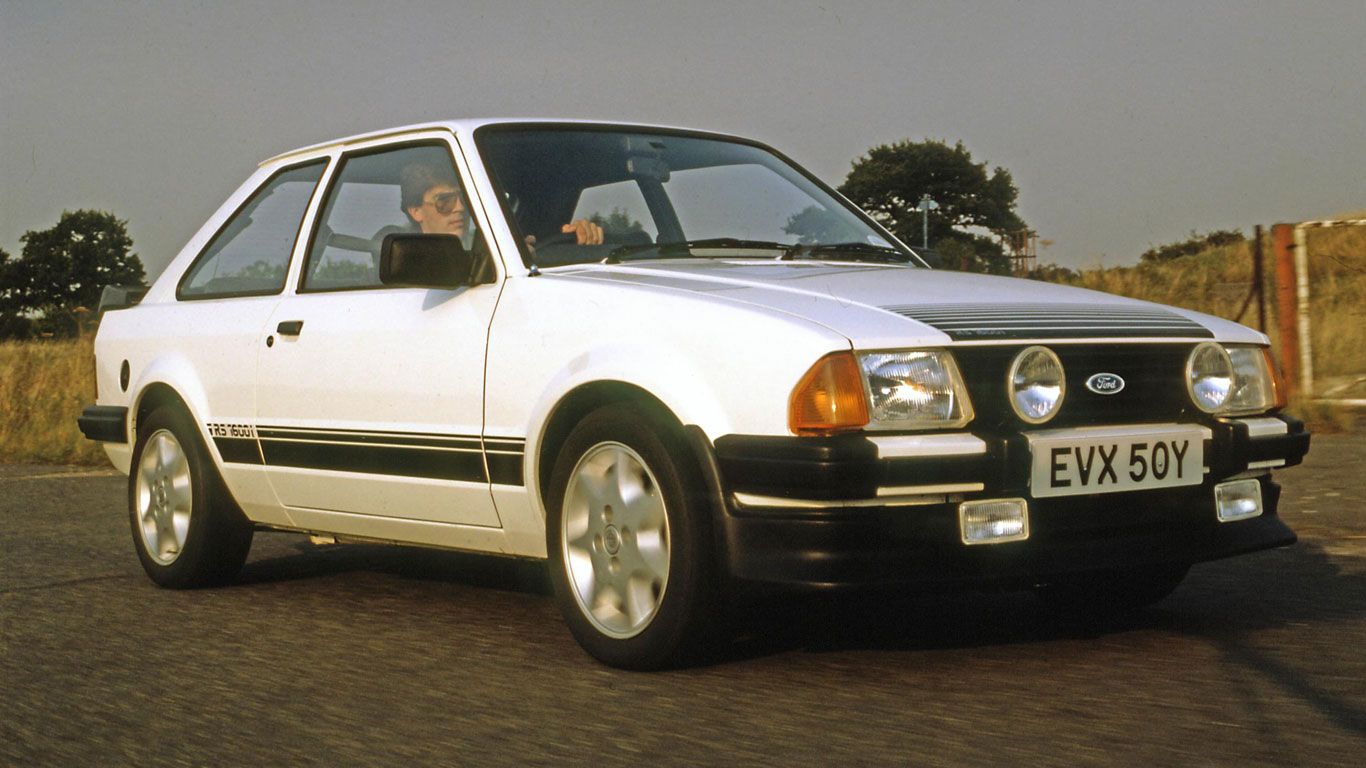
Ford Escort RS1600i Mk3
© FordThe Ford Escort RS1600i was another homologation special and much, much more capable than the Escort XR3 on which it was based. By adding fuel injection and an uprated suspension, the Escort RS1600i was more than a match for other hot hatchbacks of the day. However, it was also pricey and available only through RS dealers. That said, Ford sold 8,659 cars in total, including 2,600 in the UK, far more than the 5,000 it had planned. Today it is rare and expensive.
-
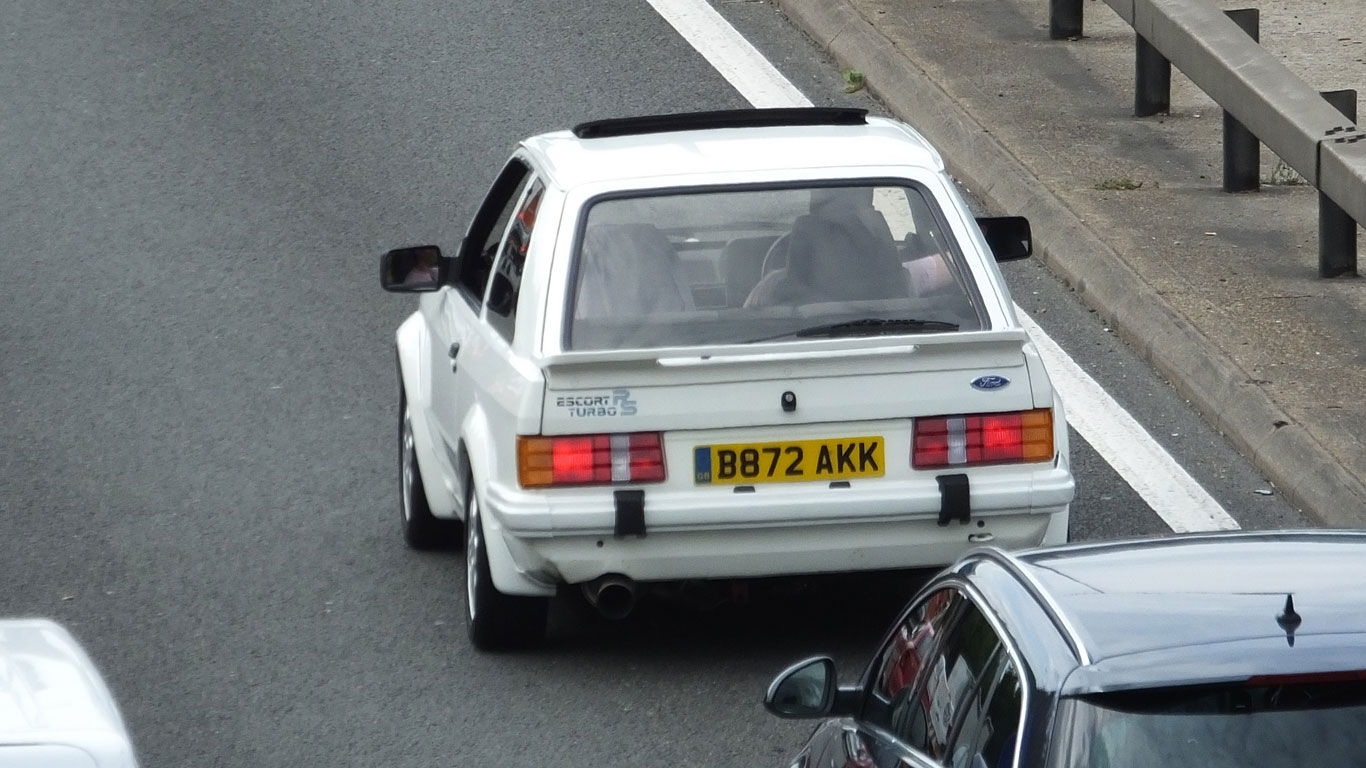
Ford Escort RS Turbo S1
© FordNow we’re talking. The Escort RS Turbo is perhaps the most ‘eighties’ of all the cars to feature here, with a name – ‘Turbo’ – to suit the decade in which it plied its trade. The vast majority of road cars were finished in factory-spec Diamond White, but there was one famous exception. A certain Princess Diana had hers in black.
-
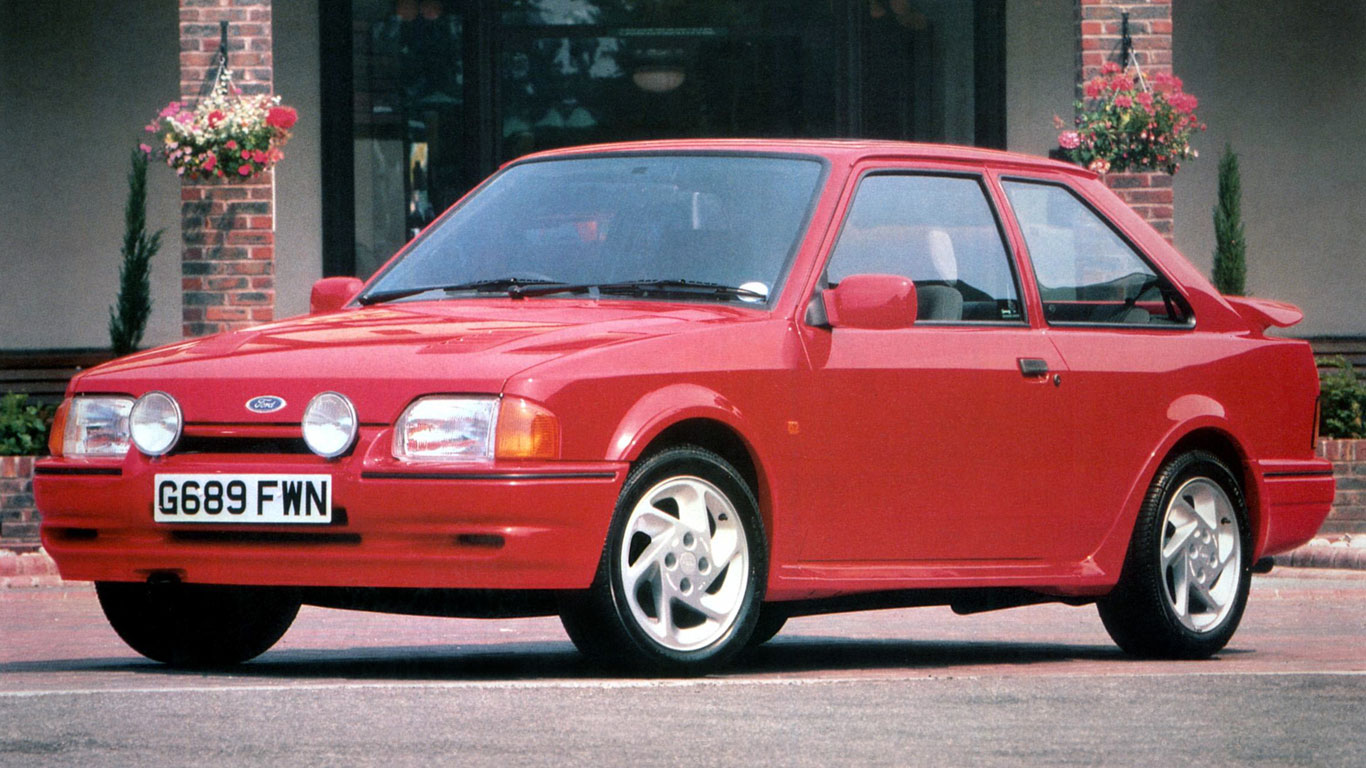
Ford Escort RS Turbo S2
© FordIn 1986, the original Escort RS Turbo was replaced by the Series 2. Now based on the facelifted Mk4 Escort, the RS Turbo was no longer a homologation special, but a series production car. That said, it did feature a host of improvements, including a revised gearbox, upgraded limited-slip diff, larger clutch and a better intercooler.
-
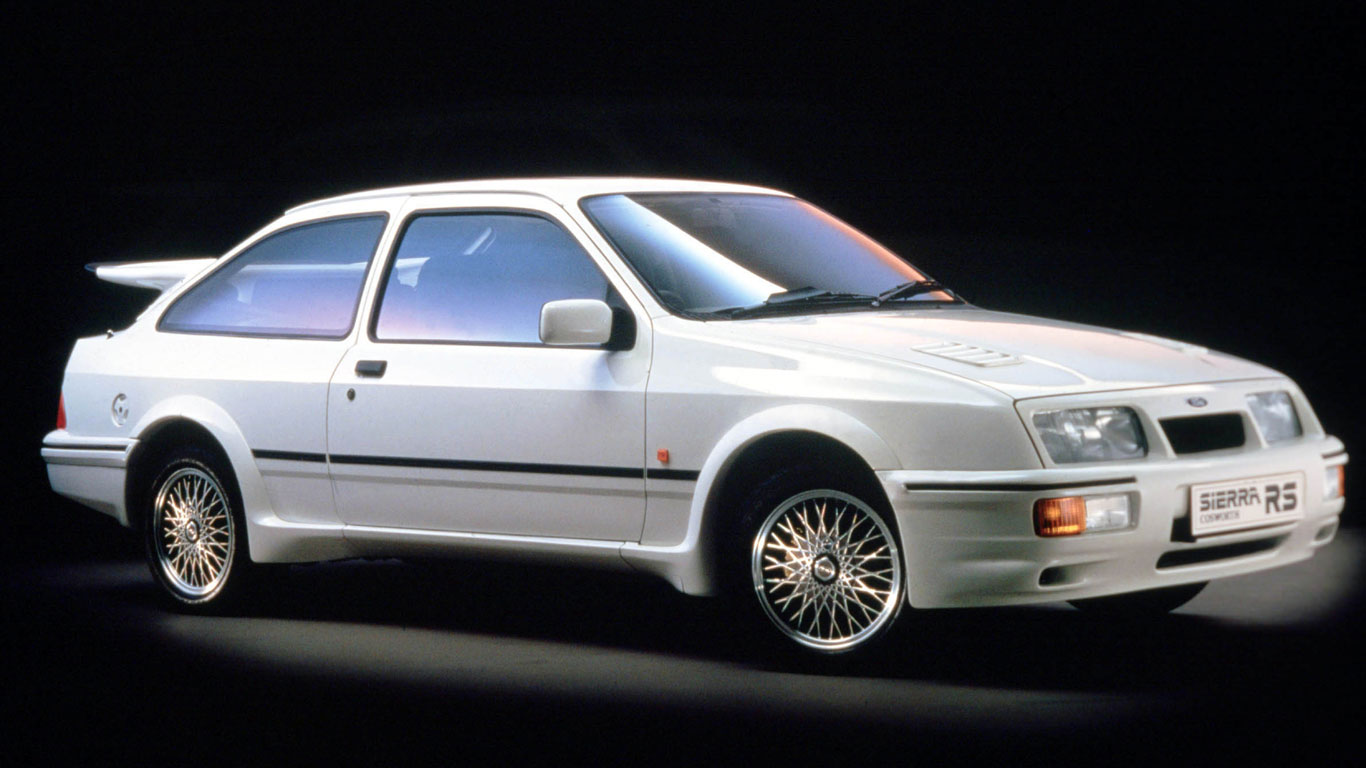
Ford Sierra RS Cosworth
© FordA legend of the performance car scene in the late 1980s, the Ford Sierra RS Cosworth was yet another homologation special. Four years in the making, the super-Sierra offered blistering pace from its 2.0-litre double-overhead-camshaft engine. Developing in excess of 200hp, the 149mph Sierra Cosworth could trouble the very best performance cars of the era, yet it was sold for a mere £16,000. And that rear spoiler was perfectly suited to the era of shoulder pads and red braces.
-
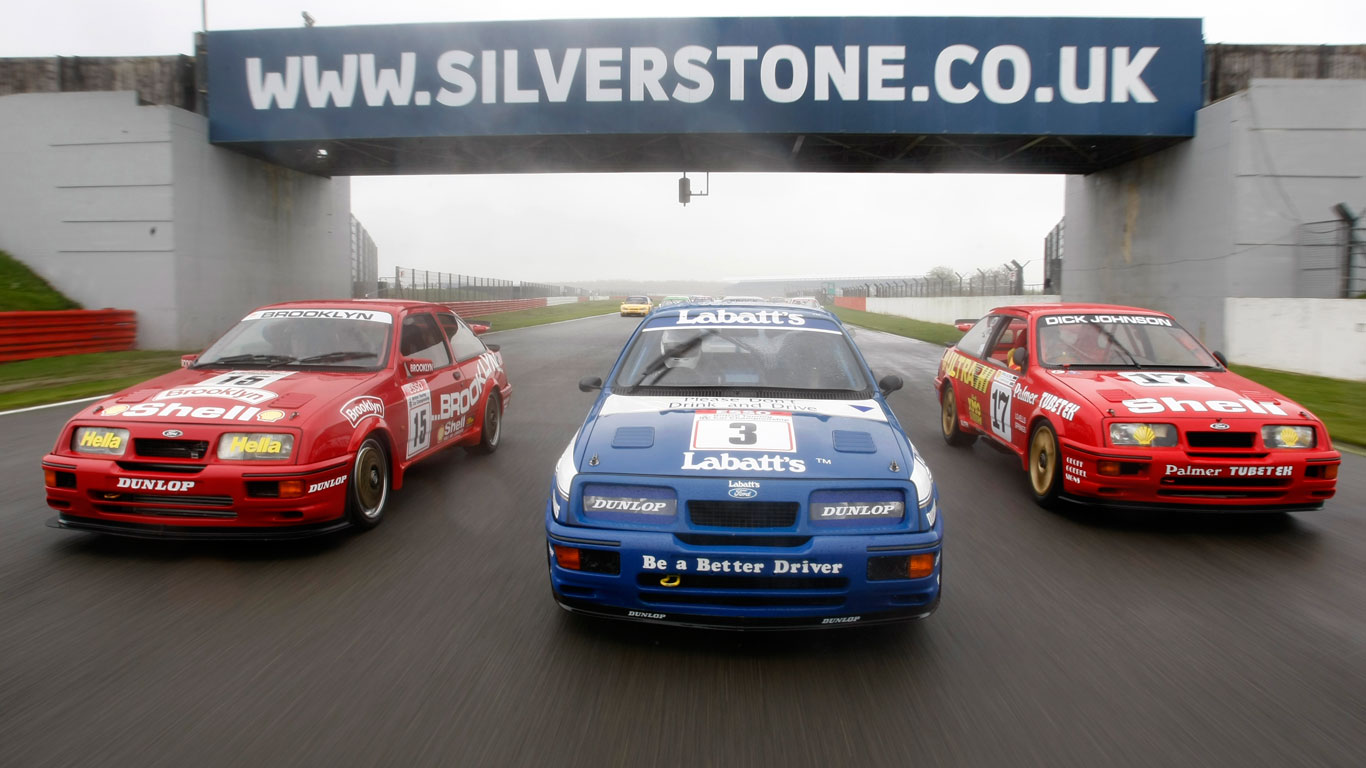
Ford Sierra RS500
© FordNot one, but two spoilers adorned the back of the Ford Sierra RS500. The name signifies the total number produced, with each one built by Tickford. It was designed specifically for Touring Car Championship duties, but the extra body cladding meant it was fractionally slower than the ‘standard’ Cosworth. That said, it was more stable at 150mph, which comes in handy when you’re hurtling around Silverstone. Or trying to race away from the police on the M40. Yep, these things were notoriously easy to steal.
-
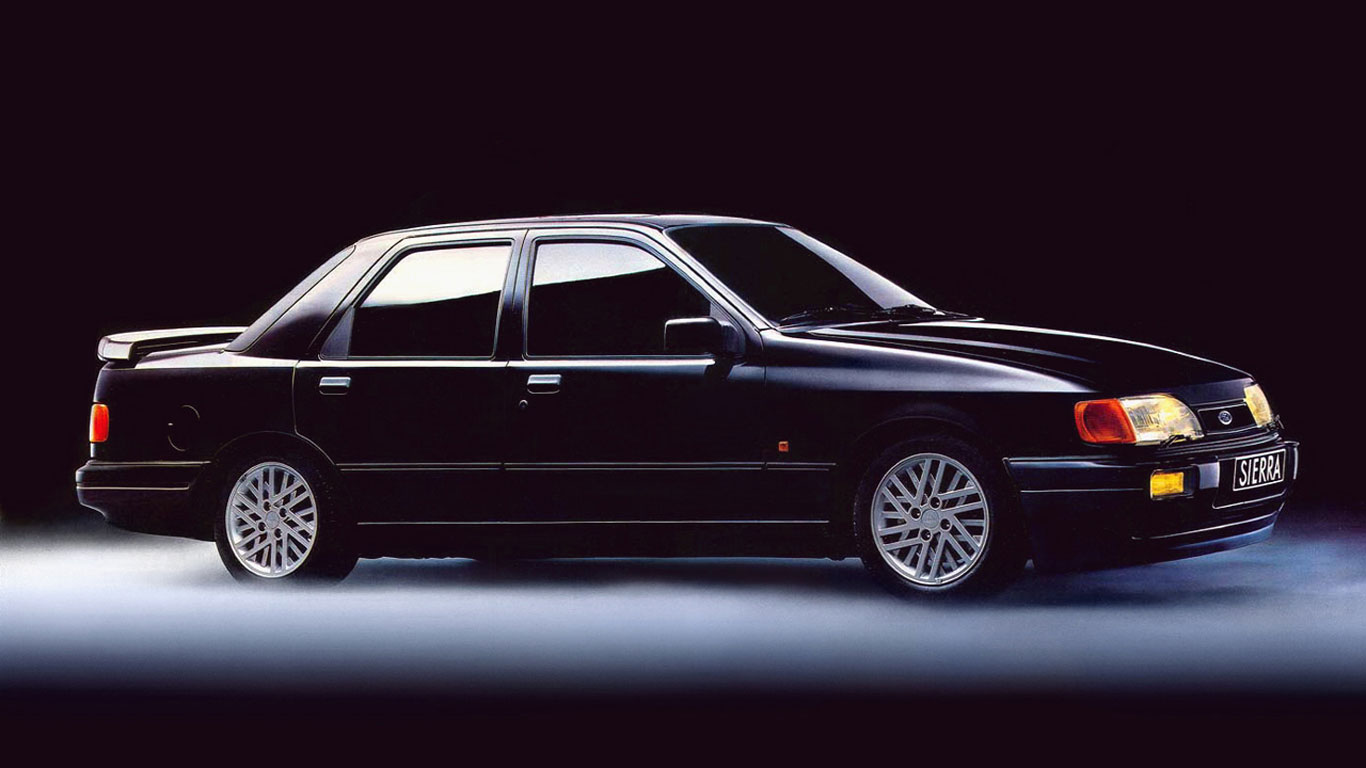
Ford Sierra Sapphire RS Cosworth
© FordThe original, rear-wheel-drive Sierra Sapphire RS Cosworth was a more discreet affair than the car it replaced. It sold in huge numbers, with more than 13,000 produced between 1988 and 1991. Even Jimmy Nail’s character, Spender, got in on the act, famously driving a Sierra Sapphire RS Cosworth in the BBC television series of the same name.
-
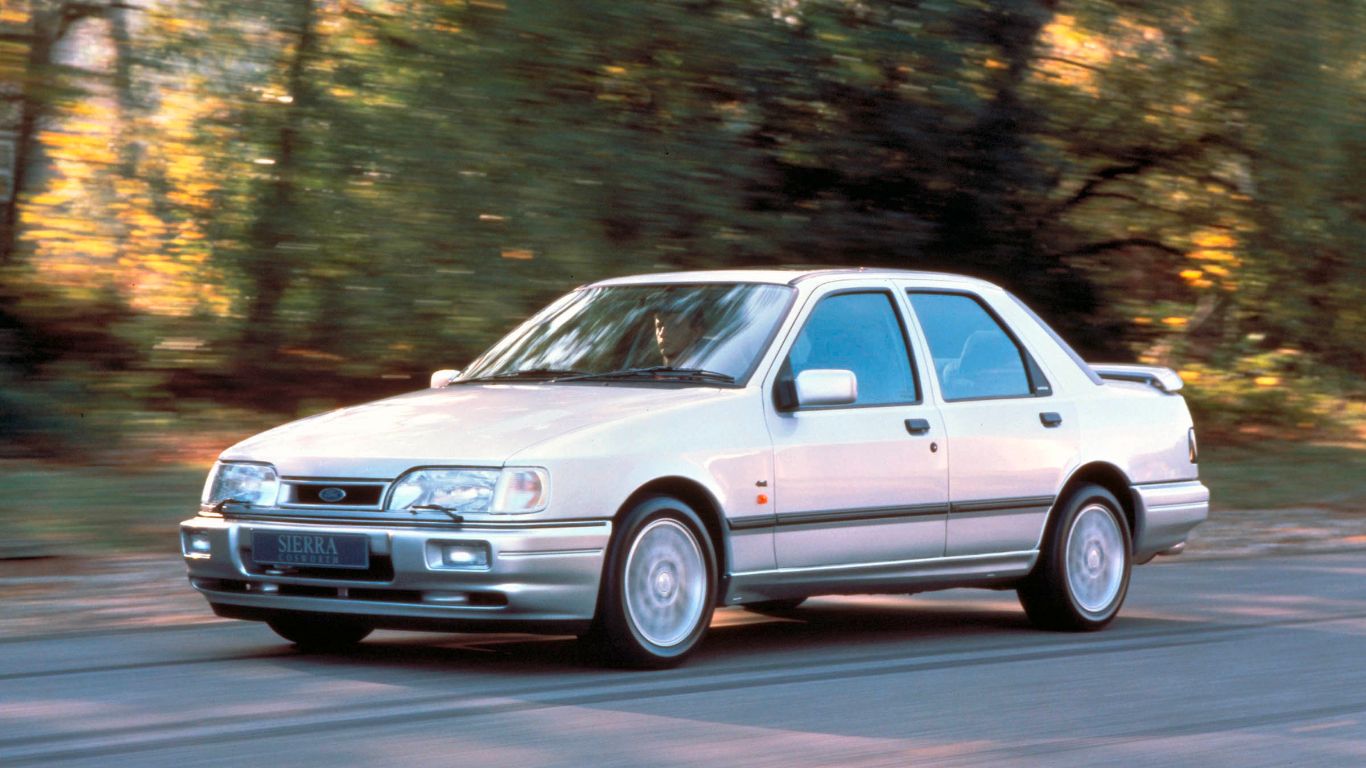
Ford Sierra Sapphire 4x4 RS Cosworth
© FordIn 1990, the Sierra Sapphire RS Cosworth gained four-wheel drive, making it the ultimate incarnation of the breed. Another 12,000 or so were built, with production ending in 1992. It’s probably one of the best things to come out of Belgium. Aside from posh chocolates.
-
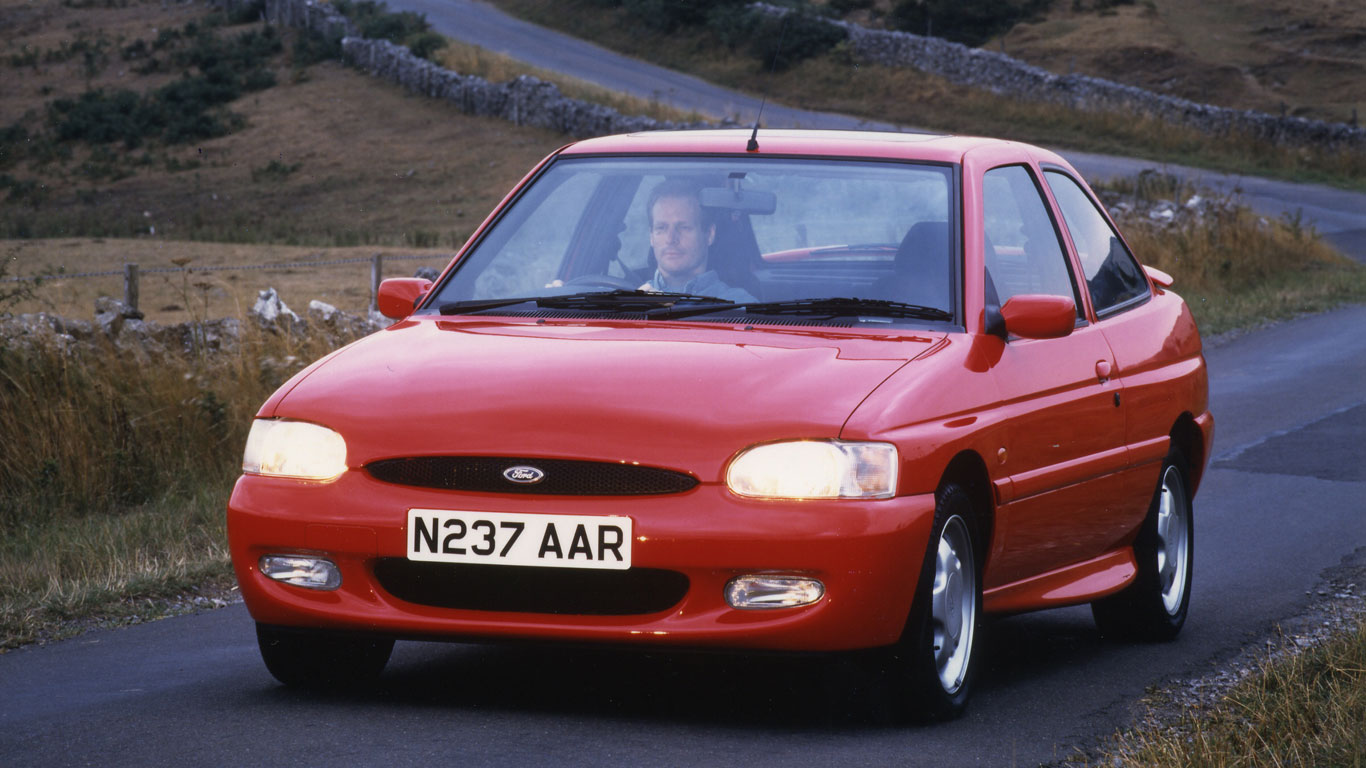
Ford Escort RS2000 Mk5 and Mk6
© FordThe Mk5 and Mk6 Ford Escort RS2000 prove you can make a silk purse out of a sow’s ear. The Escort of the early 1990s was a dreadful car, lacking in any redeeming features. But the RS2000 was genuinely good, with Ford even creating a one-make racing series to help boost sales. The series didn’t last long, but the RS2000 lived on until 1996.
-
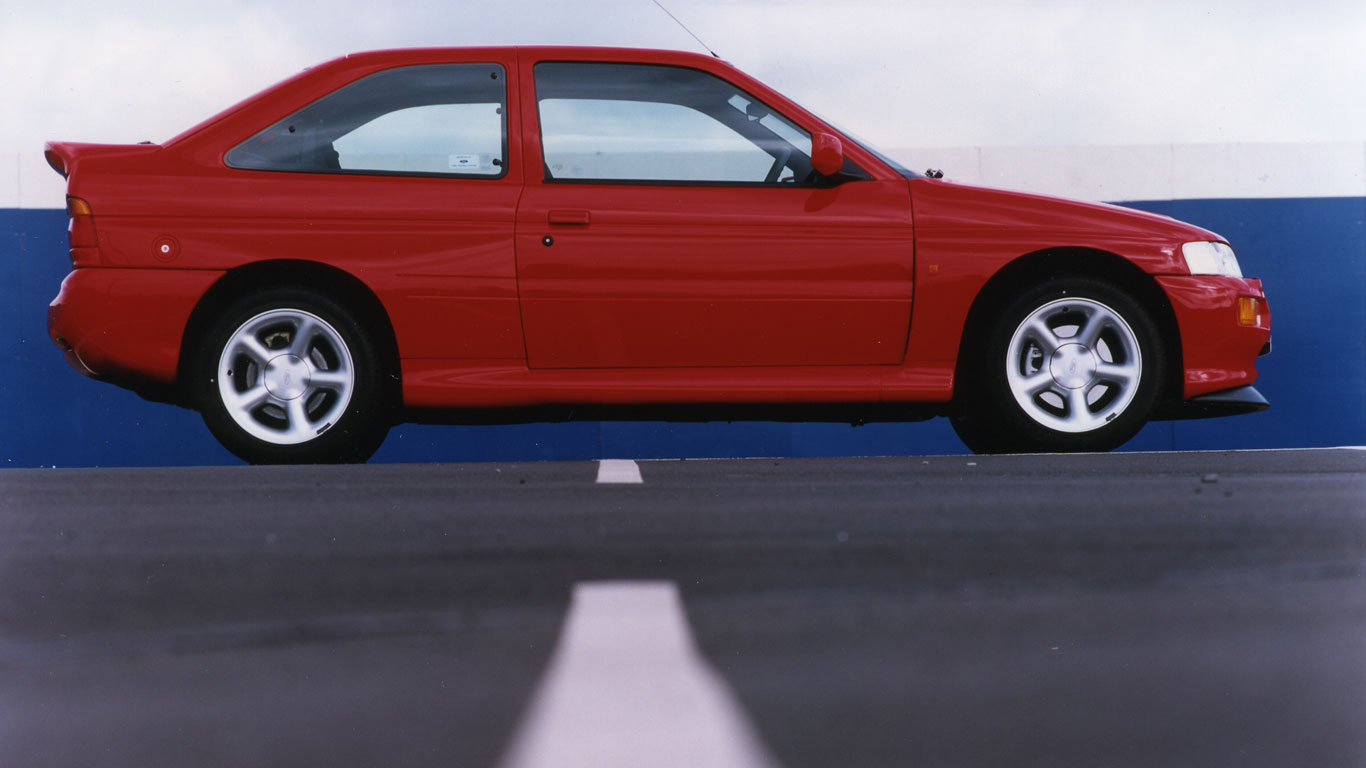
Ford Escort RS Cosworth
© FordStill, does the Escort Mk5 have a terrific legacy or what? This is the Ford Escort Cosworth, one of the great road cars of the era and a phenomenally successful rally car to boot. In the ‘Cossie’, Ford had a poster car that could fight for space on bedroom walls across the land. It looked immense and went like stink. Being based on the previous Sierra Sapphire 4×4 RS Cosworth, it also had proper pedigree.
-
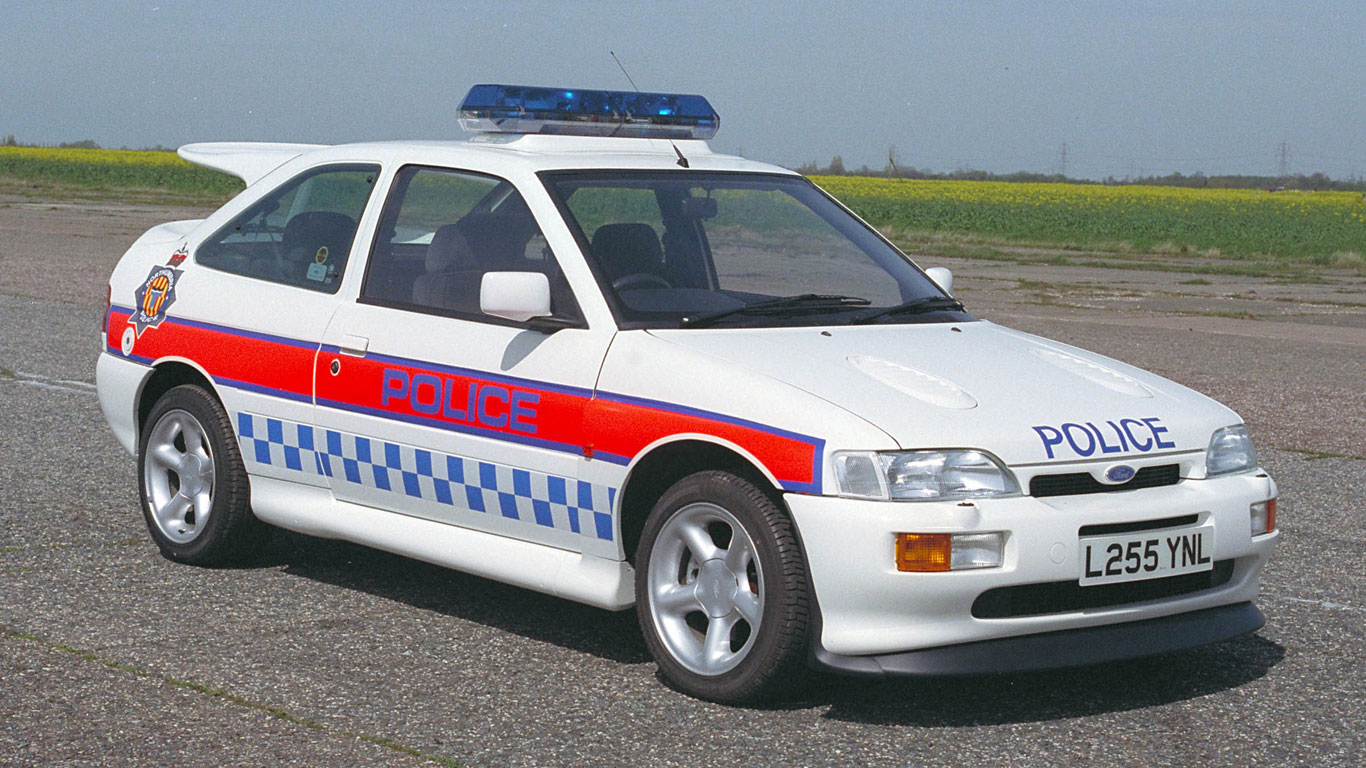
Ford Escort RS Cosworth
© FordLaunched in 1994, the four-wheel-drive Escort RS Cosworth was good for 147mph and its 2.0-litre engine was highly tunable, with some aftermarket companies creating 1,000hp monsters. In 1995, the car was given a facelift, to include a restyled grille and front bumper, a new dashboard and revised alloy wheels. By the time it went out of production in 1996, it was already a classic.
-
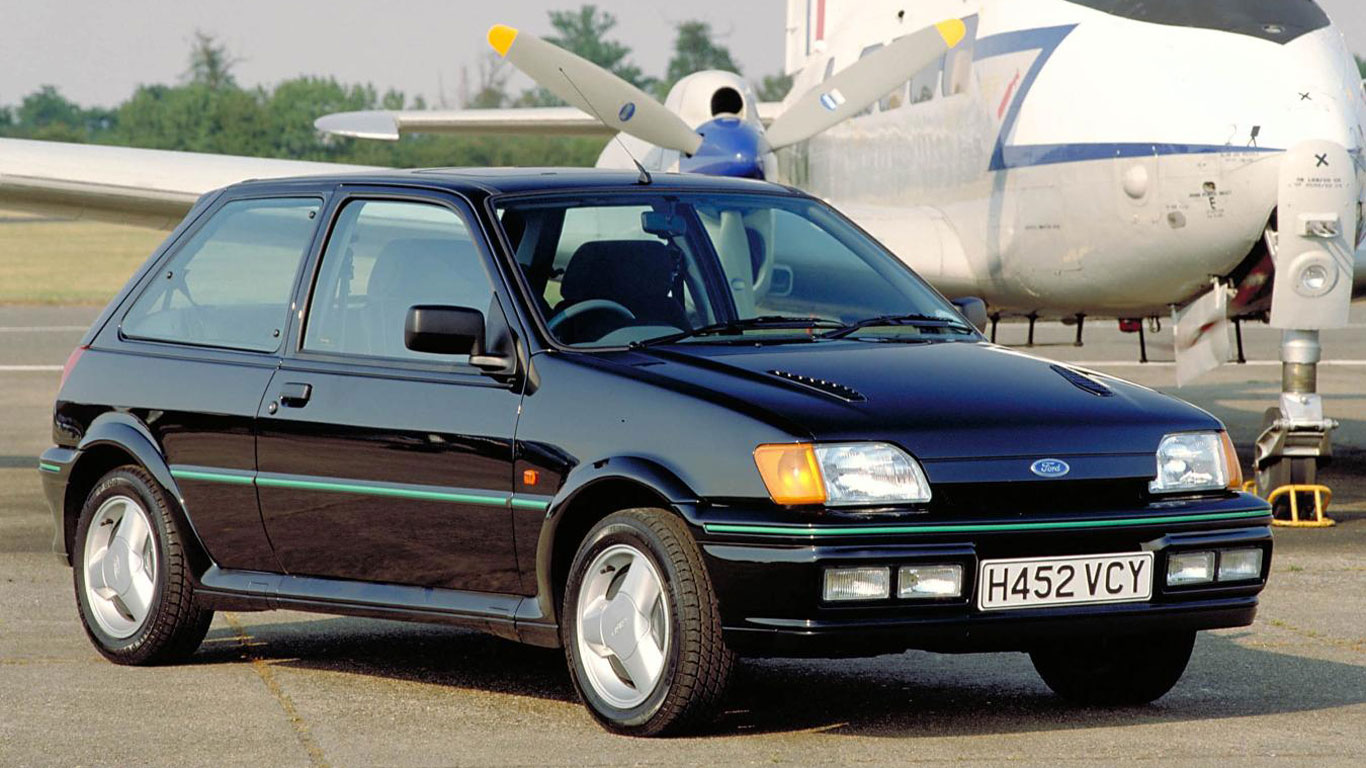
Ford Fiesta RS Turbo
© FordIt’s at this point that we rewind the clock to 1990 to remember the smallest car ever to wear the RS badge: the Fiesta RS Turbo. In truth, it wasn’t the greatest RS Ford, but it looked good and sold very well.
-
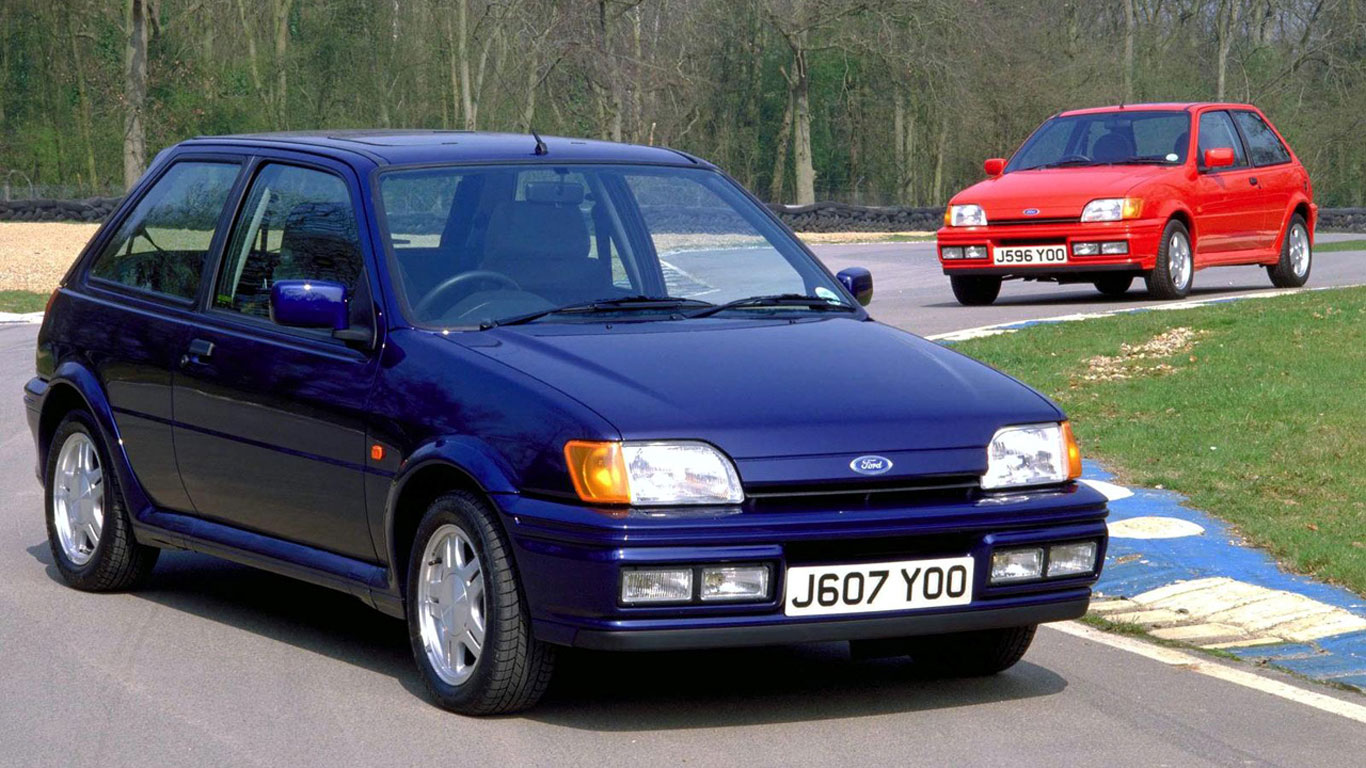
Ford Fiesta RS1800
© FordThe Ford Fiesta RS1800 replaced the RS Turbo in 1992 and was only distinguishable from its XR2i sibling by slightly revised alloy wheels and an RS badge on the boot. It was almost as though Ford didn’t feel it was worthy of the fabled badge.
-
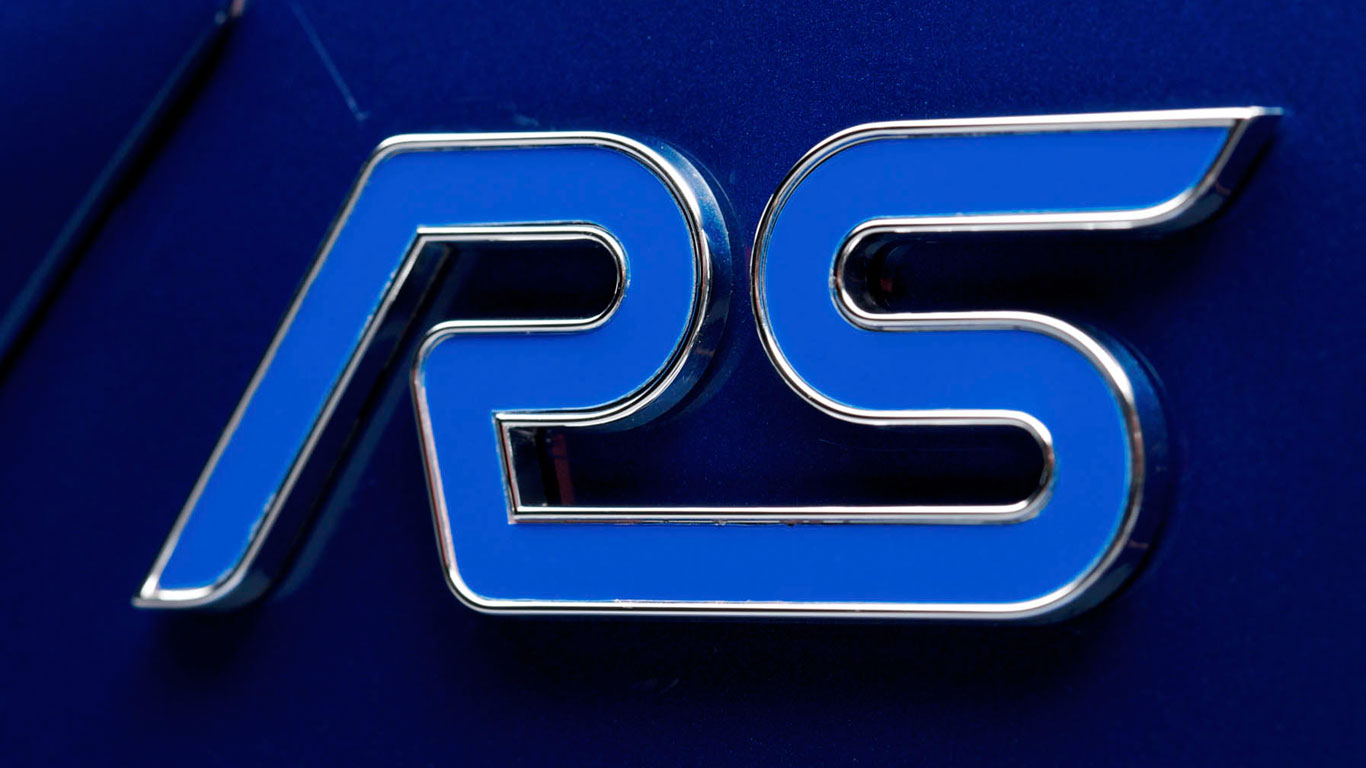
The end of an era
© FordIn 1996, production of the Ford Escort RS Cosworth came to an end. After 26 years of upsetting the establishment and tearing up the streets, the RS badge went into hibernation. We wouldn’t see its return until the new millennium. And even then, Ford kept us waiting.
-
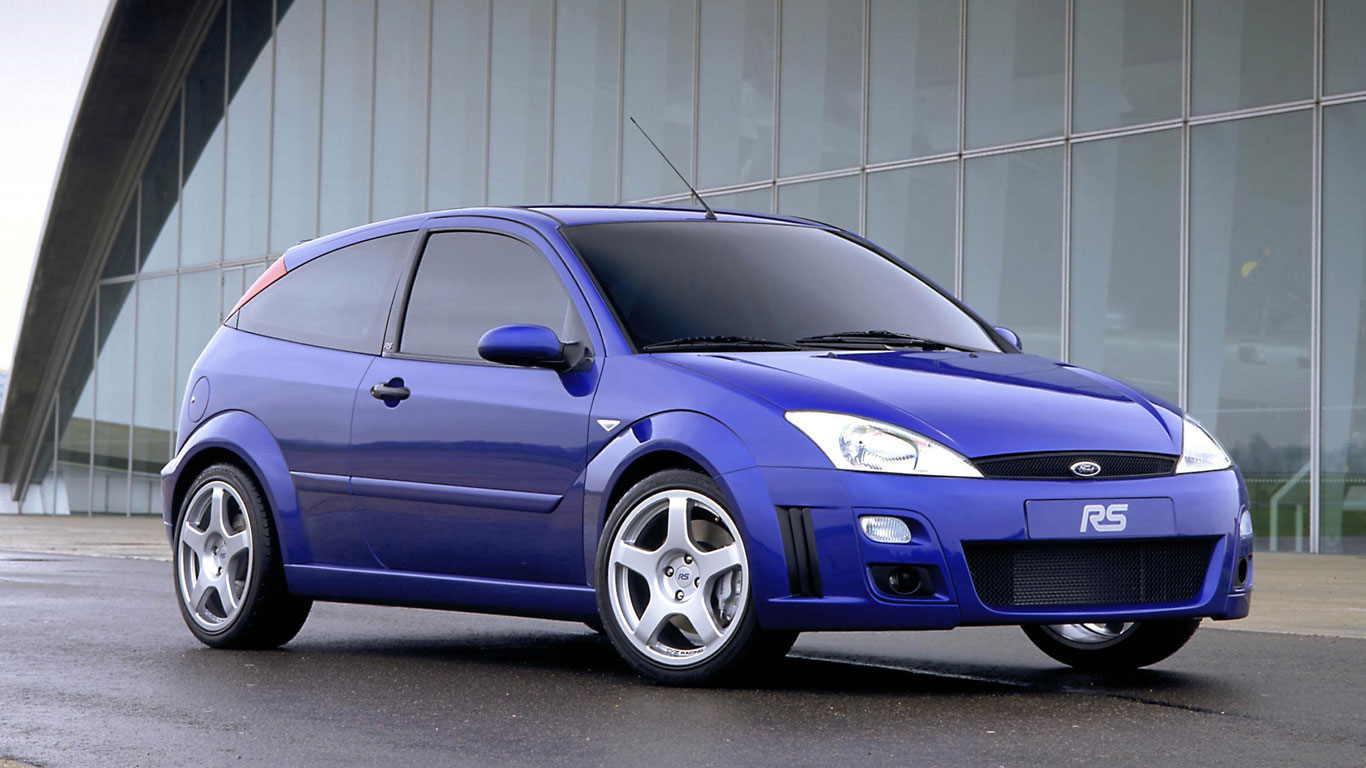
Ford Focus RS Mk1
© FordPreviewed at the 2000 British Motor Show, Ford unveiled a road-ready version of the Focus RS at Geneva in 2001. While clearly a Mk1 Focus, Ford had changed around 70 percent of components for the RS, so there were no half-measures with this car. All were finished in brilliant Imperial Blue metallic, although the black-and-blue interior wasn’t to everyone’s taste.
-
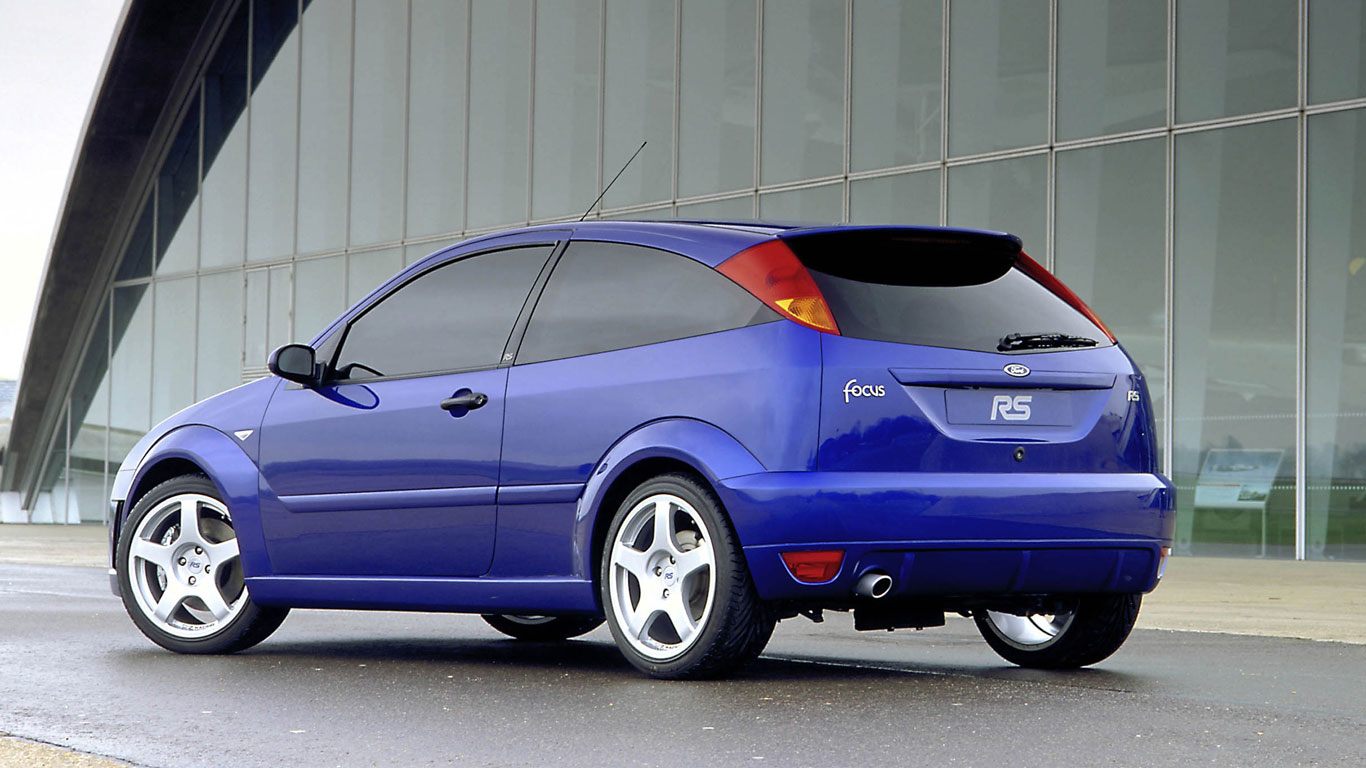
Ford Focus RS Mk1
© FordThe Ford Focus RS went on sale in 2002 and was the first Ford to wear the RS badge since the Escort Cosworth in 1996. Its 2.0-litre turbocharged engine developed 212hp and the RS featured a host of big-name components, including Sachs dampers, Brembo brakes, Recaro seats, OZ alloy wheels and a Quaife limited-slip differential. Fast and very feisty, few cars seem to divide opinion like this one.
-
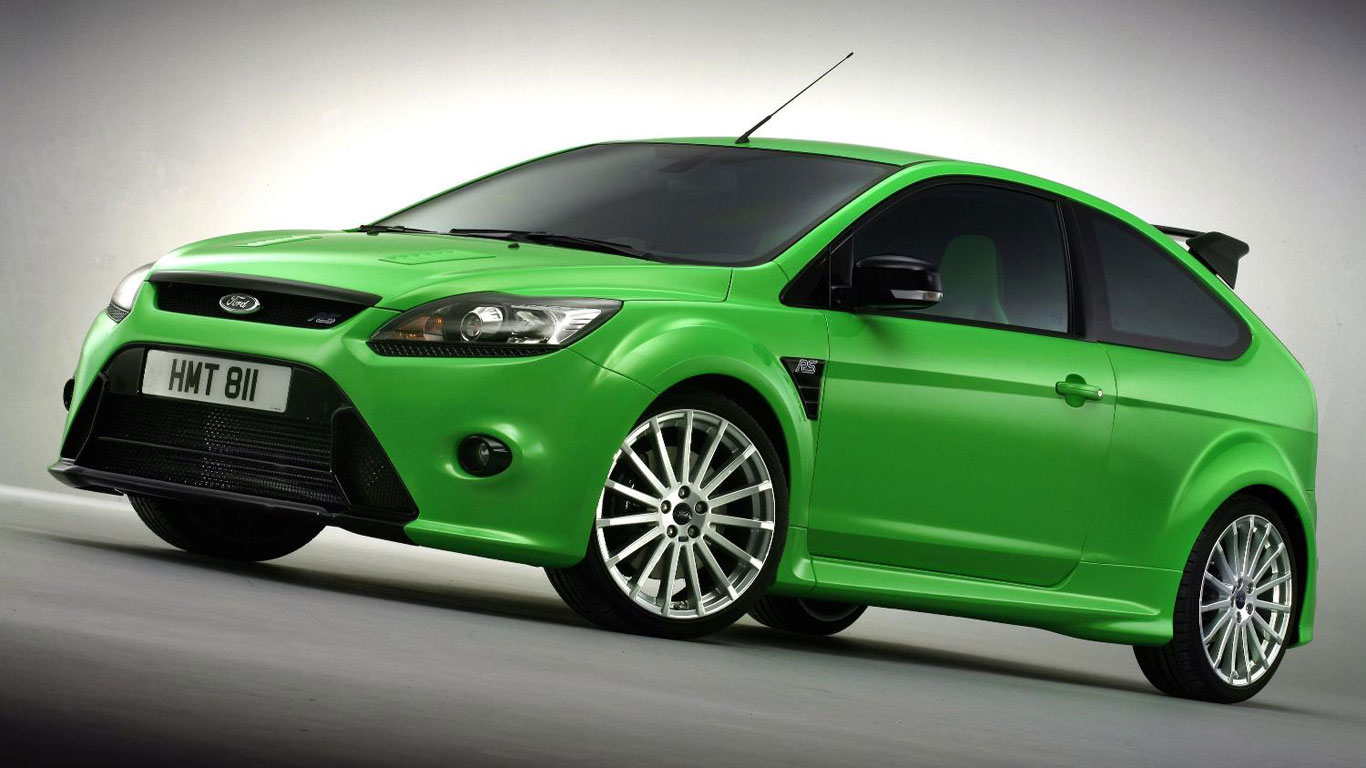
Ford Focus RS Mk2
© FordThen Ford made us wait, again. In 2003, we said goodbye to the original Focus RS, but it would be another six years before saying a big hello to the Mk2 version. Ford didn’t hold back, though, with the 2.5-litre engine lifted from the Focus ST and treated to a larger turbocharger, a new intercooler and a host of other tweaks. The result was 300hp, pumped through the front wheels only, plus a Quaife diff to help keep things on the straight and narrow.
-
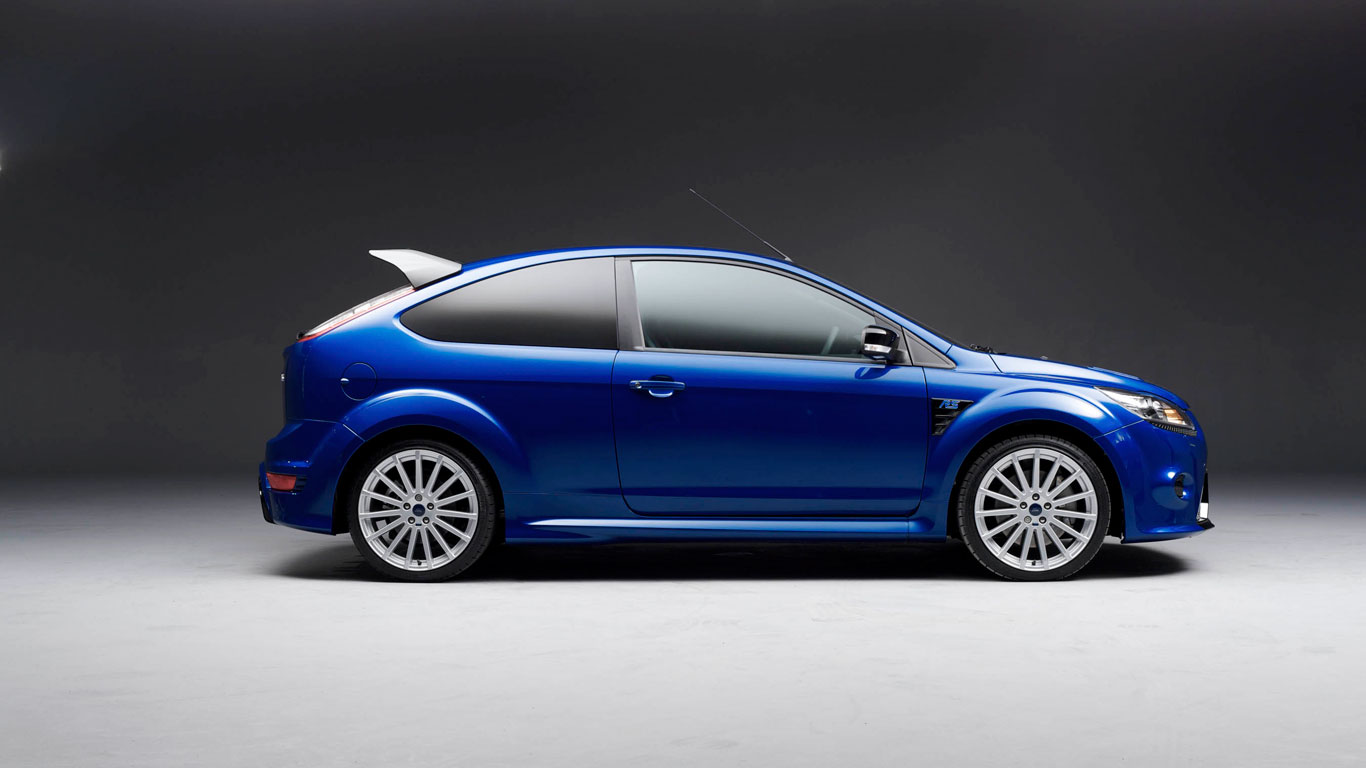
Ford Focus RS Mk2
© FordThe MK2 Ford Focus RS had the credentials to mix it with proper thoroughbred sports cars. Its top speed was 163mph and 0-62mph time was polished off in 5.9 seconds. Make no mistake, this was a proper RS, so the Mk3 had a tough act to follow. And that’s before we mention the RS500…
-
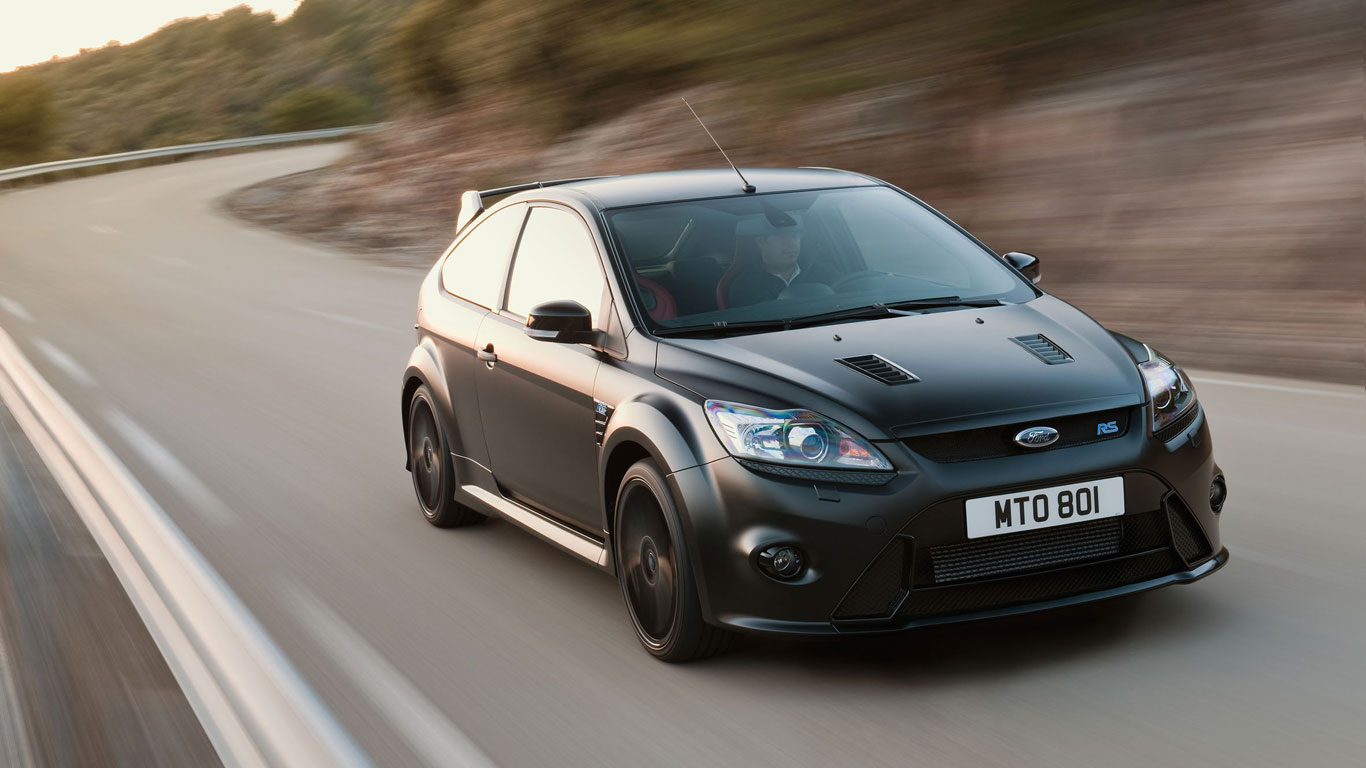
Ford Focus RS500
© FordThe ultimate Mk2 Focus RS is the RS500. Ford upped power to 350hp and shaved 0.3 seconds off the 0-62mph time in the process. Only 500 were made, with 101 sold in the UK. The price when new in 2010 was £35,450. Today, you’d be very lucky to get change out of £50,000. Such is the prestige and heritage of the RS badge.
-
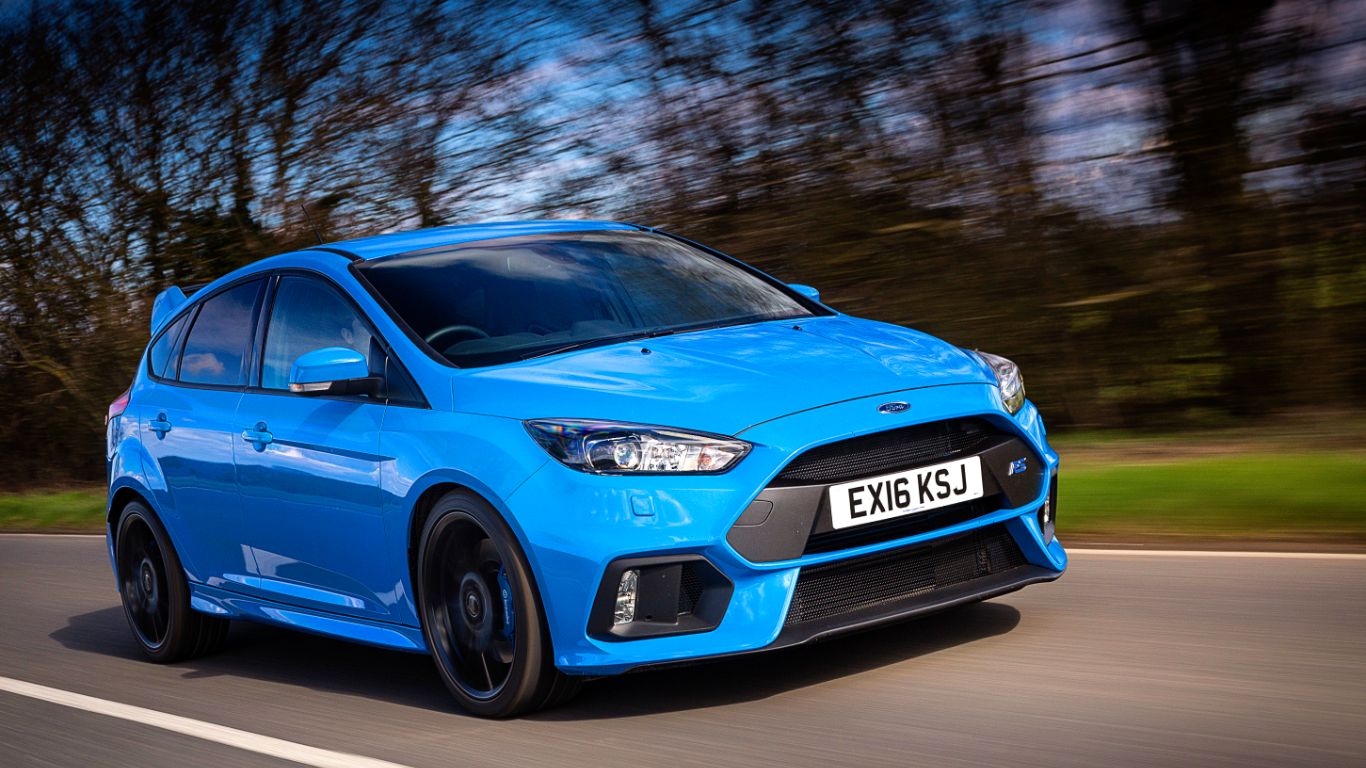
Ford Focus RS Mk3
© FordIn a blizzard of hype – aided by price tag of just £29,995 at launch – the Mk3 Focus RS arrived in 2016. Now with four-wheel-drive, the 350hp super-hatch could blast to 62mph in 4.9 seconds and reach 165mph. It even had a Drift Mode (for track use only, Ford insisted). Our Motoring Research review concluded: ‘It’s something quite special, a genuinely five-star hot hatch that takes its place alongside the Fiesta ST, Escort RS Cosworth and other notable fast Fords in the pantheon of greats’.
-
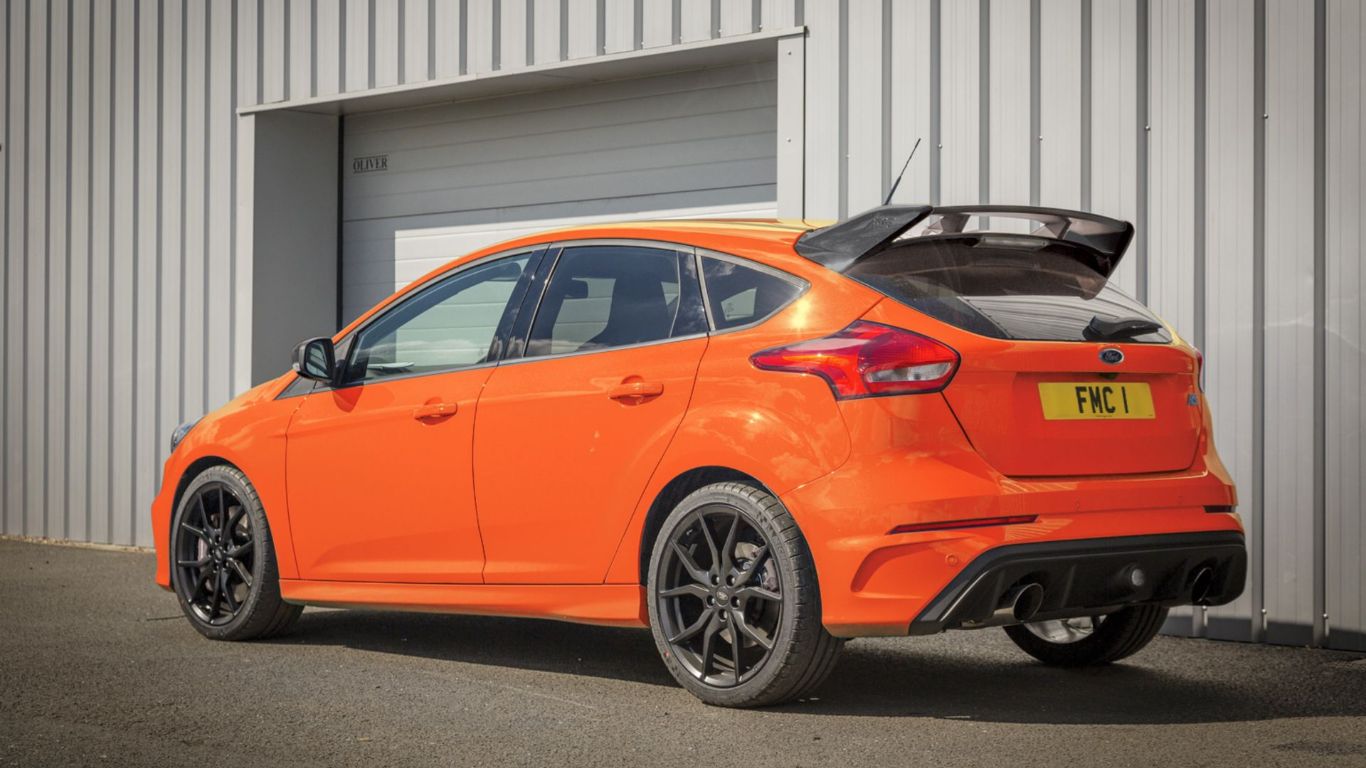
Ford Focus RS Mk3
© FordThe third-generation Focus RS bowed out with 50 Heritage Edition models for the UK market. Fitted with a 375hp Mountune engine upgrade and finished in dazzling Deep Orange paint, they are highly collectable today. More so, perhaps, now that we know the Focus RS won’t be replaced.
-
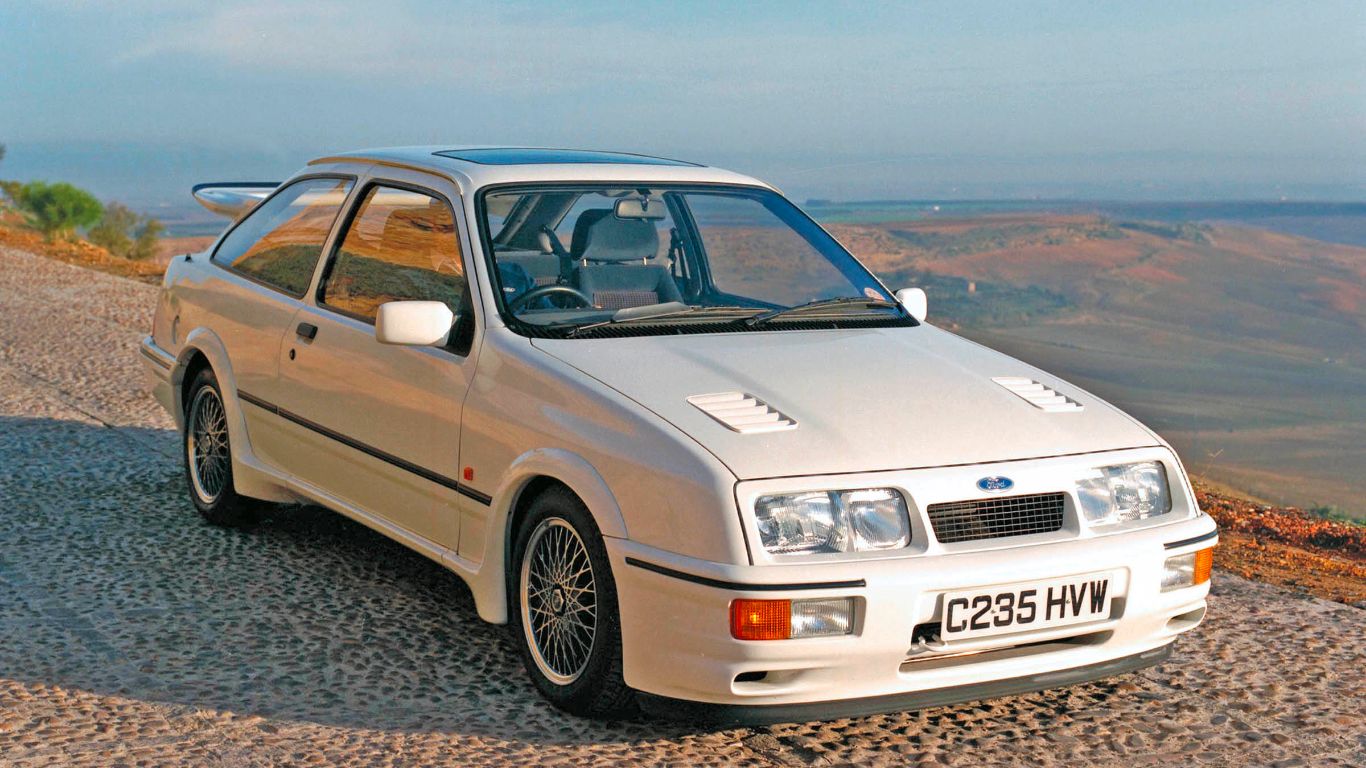
Ford RS: the future
© FordYes, Ford has confirmed there won’t be an RS version of the current Focus. The cost of developing a hybrid drivetrain – needed to meet fleet emissions targets – was simply too great. That leaves the RS badge back in hibernation for now. Could it make a comeback on an all-electric fast Ford as 2030 approaches? With a history like this, we live in hope.
Rallye Sport: the Ford RS story
We revisit the fast Fords that have worn a Rallye Sport badge, including the Escort RS Turbo and Sierra RS Cosworth.
Home Rallye Sport: the Ford RS story
News
Race and rally Ford icons head to auction this month
The Iconic Auctioneers NEC Classic sale features an array of legendary Ford performance cars, including a Sierra RS500 and a road-spec RS200.
Classic Jaguar bought by Madonna heads to auction
Pop icon Madonna has been photographed at the wheel of this Jaguar Mark X, which she purchased for her son, Rocco, to use in London.
First new Group A-spec Ford Sierra RS500 is ready to race
CNC Motorsport has delivered the very first reborn Andy Rouse Engineering Ford Sierra RS500 to its lucky owner.
Features
This Citroen 2CV driver gives us a masterclass in maintaining momentum
You think a Volkswagen Up GTI is the best affordable car for a twisty road? Pah...
The auction full of genuinely cheap classic cars
Some of the potential bargains on offer at the forthcoming Anglia Car Auctions sale
Land Rover Defender: driving 70 years of history
We travel to the remote Isle of Islay to drive six classic Land Rovers off-road
Reviews
2002 Ford Focus RS review: Retro Road Test
The original Ford Focus RS is a modern classic that continues to divide opinion. We get behind the wheel – and offer advice about buying one.
1962 Volvo P1800 review: Retro Road Test
Famous for being driven by Roger Moore in 1960s TV series The Saint, the Volvo P1800 is a leftfield and very stylish classic car.
1966 Fiat 500 review: Retro Road Test
The iconic Fiat 500 got Italy moving after the Second World War and inspired today's retro remake. We tell its story – and drive one.
